( A stunningly beautiful and vibrant colored Big Spring wild brook trout-author image-circa 2015)
“Man’s Utopian dreams get circumvented through compromise and disappointment into a tolerable reality.”(quote by Stewart Stafford)
It was as pure and utopian as a wild brook trout heaven could ever be. But unlike the quintessential babbling mountain brooks surrounded by large Igneous boulders, emerald mosses and a deep forest green canopy that depicts wild brook trout nirvanas, this place has none of these. That typical primordial forest habitat which your senses tells you sounds and smells like a Salvelinus fontinalis paradise, one that evolved a million years ago in the Pleistocene epoch of Appalachian Mountains, these brook trout waters and this place has a comfy domesticated ambience and feel. One you could gently walk to in your Wellington boots and hip waders and not worry about Eastern rattle snakes, all kinds of poison ivy and sumac, and banging-up limbs in a grueling mountain climbing survival journey. A journey of which demands months in the gym to have the body to worship at the mountain ravine church of the tiny brooks and 6 inch gems with Monet pastels and prehistoric beauty that still swims in them.
My story is about a limestone spring creek in the pastoral farmland of the flat land Cumberland Valley that was settled by hard working Amish and European immigrants, and is not that typical brookie water setting one envisions. Yet this hallowed spring in the halcyon days of Vince Marinaro and his passionate angling comrades of the Harrisburg Fly Fishers Club was a trout paradise where their drive down the old Carlisle Pike would take them on a mini-journey into a pastoral hallow that seemed to stand still in time. It would be their little escape from the fast growing city and suburbs along the Susquehanna. Back then an hour drive was a big deal and almost viewed as an event to plan for. The Big Spring became their secret getaway back in the 40’s and 50’s as it was mine dating back to the 80’s to get away from the insanity of Washington, D.C. IT is why today as I write this it still stirs and rekindles fond memories and strong emotions of attachment.
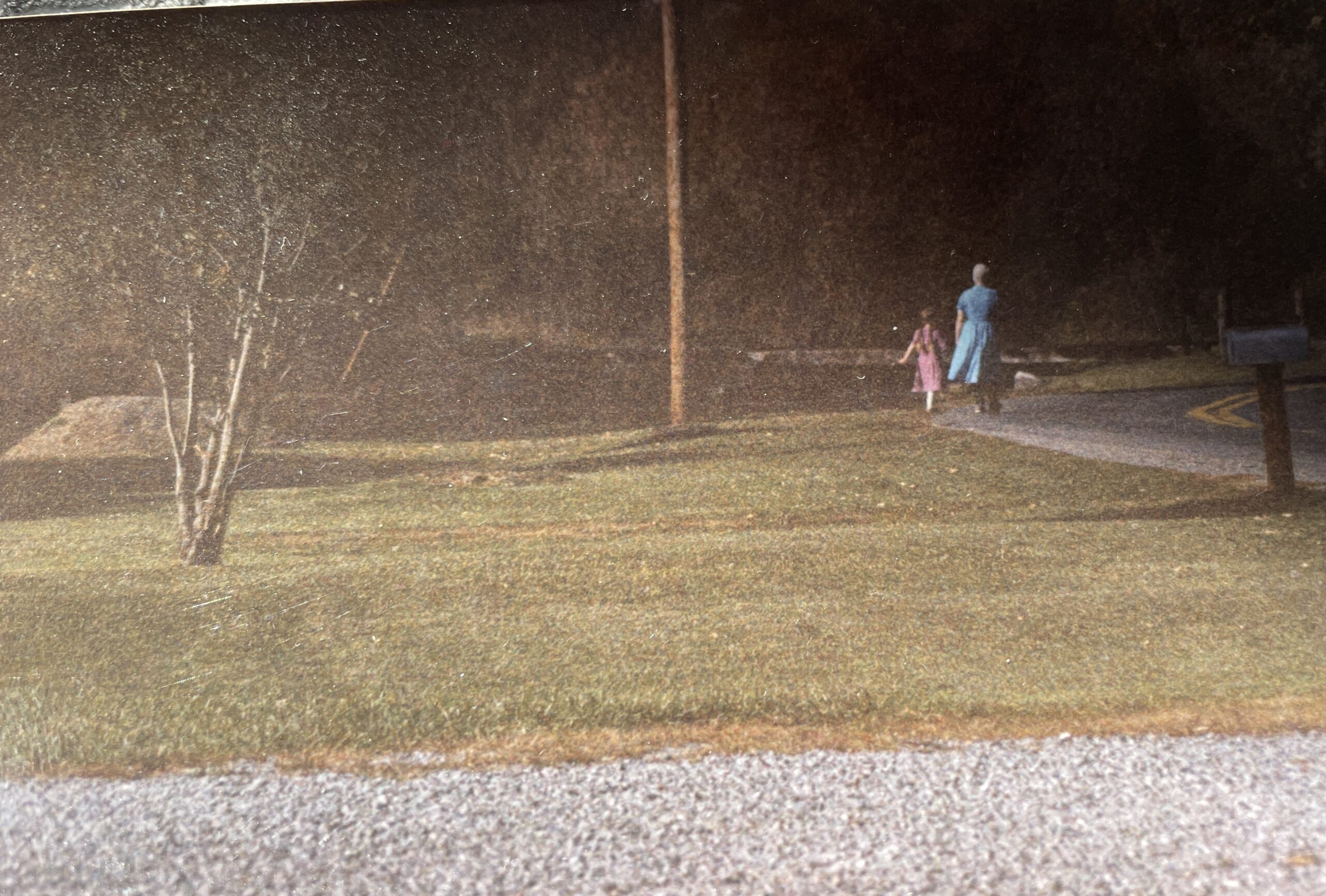
Despite my wild trout, salmon and steelhead Utopia where I live in Michigan, the Big Spring still becomes an annual visit which my romantic and nostalgic leanings still draws me to . But oddly it is not so much for the fishing these days, but for the pilgrimage into a happier and simpler time. Yet sadly each time I visit there a deep sadness engulfs me as to what it was and what it should be, all of which is a far cry from what it is today
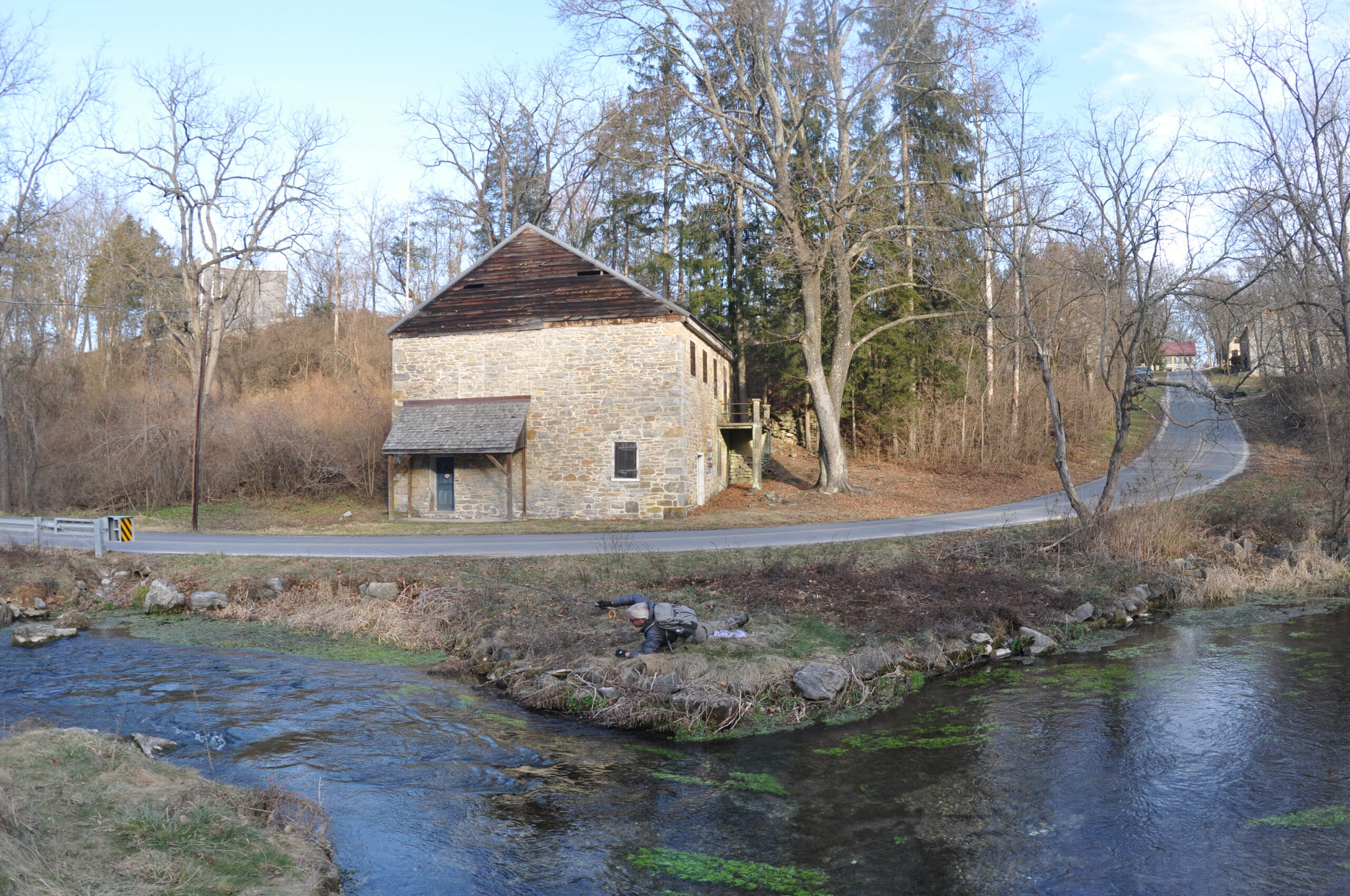
But there is something magical and enchanting about this place I cannot pinpoint. A boyish sense of wonderment and escapement forever engulfs me when I drive down the Big Spring road and see large outcroppings of limestone rock, sediment of one-celled Foraminifera that rained to the glacially cut valley floor in the chemically charged inland seas millions of years ago. They look very much like the volcanic rocks along the hills of the Upper Stora Laxa River in Iceland, where you envision little elves; the Icelandic Huldufólk: hidden people, with their heads popping out starring at you from the corner of your eye in your imagination. And then when you see wild trout swimming, foraging and procreating in a pristine spring creek aquaria, your boyhood juices’, those tingling sensations takes over when the adrenalin gets jacked-up in trout fishing obsessed people. My Mother always said I got a crazy look and acted “dziki” ( wild in Polish) when she dropped me off as a boy on a trout stream near us, as she went an visited a farmer for produce. It is that “buzz high” all trout bums get when they see a trout Utopia, or any trout stream regardless. That sense of awe, delirium and anticipation which I got doped-up on an addicted to in my boyhood tree-house in Poland, one that my cousins and I built above a spring creek river than ran through our farm off the Baltic coast, and which I wrote about in my Nexus book. Here I watched wild brown trout and the last wild indigenous populations of Atlantic salmon and sea trout in those streams jockey-around a pool like kindred cousins.
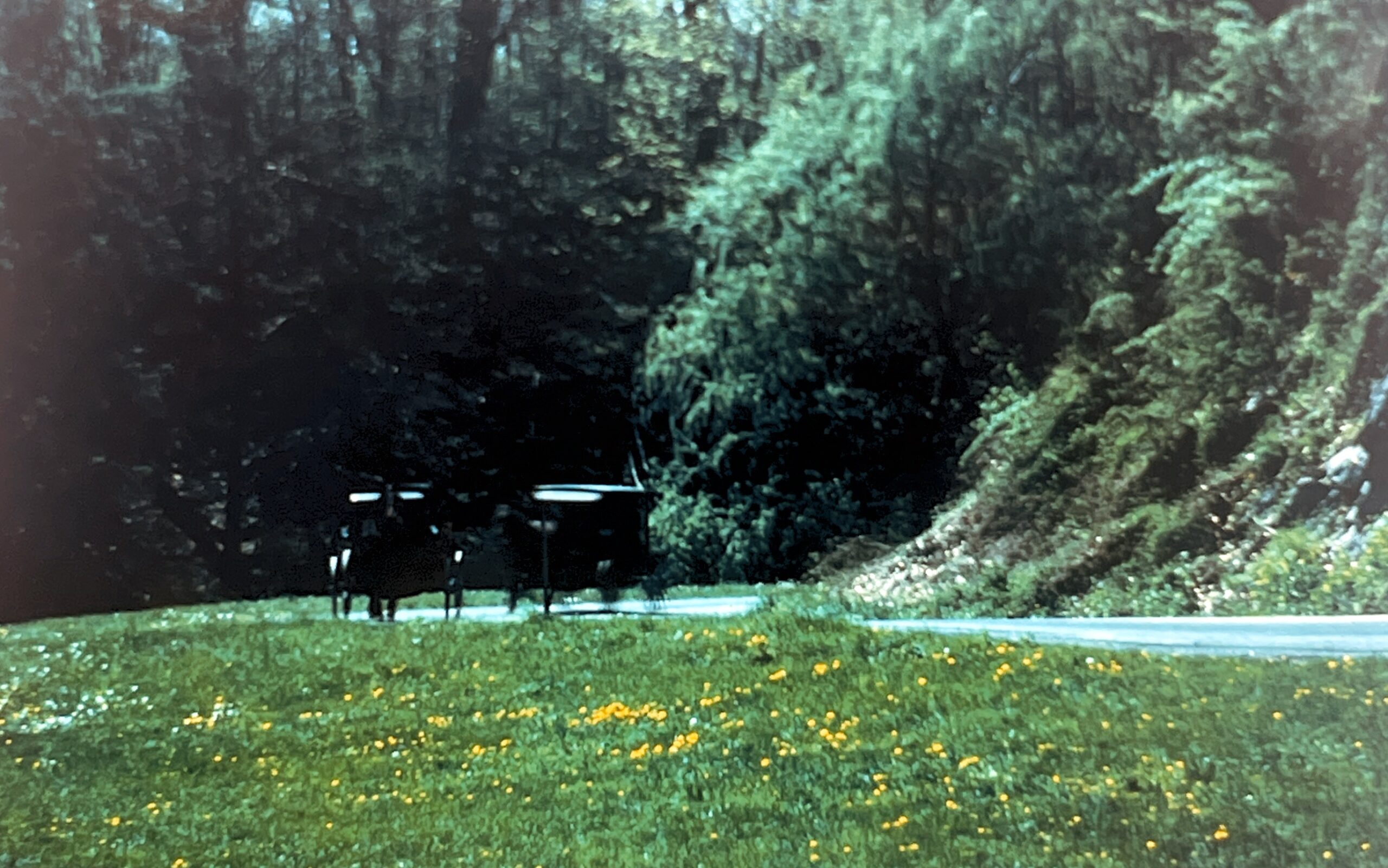
Like on that Wieprza River of my youth, similarly the Big Spring watercress fills and fluffs-up its banks as a beautiful salad garnish, harboring the daily manna from the fish gods of countless scuds and cress bugs for several miles. In its halcyon days, fine gravel nursed the trout’s epicurean fare of mayflies and midges for the dry fly purists of Marinaro’s band of trout addicted brothers who pursued the trout that worshiped the biological drift. It’s primal subterranean aquifer spring-fed waters filtered efficiently through the trout’s redds of laid eggs with the progeny of generations yet to come. All was well with these vodka-clear waters where a fly fisher’s dream of perfection was cemented as wild brook trout dimpled the surface and could be seen rising by the hundreds. All the while as Scottish imported leviathan browns, the trout world’s new Loch Ness/Leven monsters, lurked and hunted the dark waters of the gristmill pond near the Big Spring’s source. Life was good, times were simple, and being a Pennsylvania trout bum back then was a taste of Utopia.
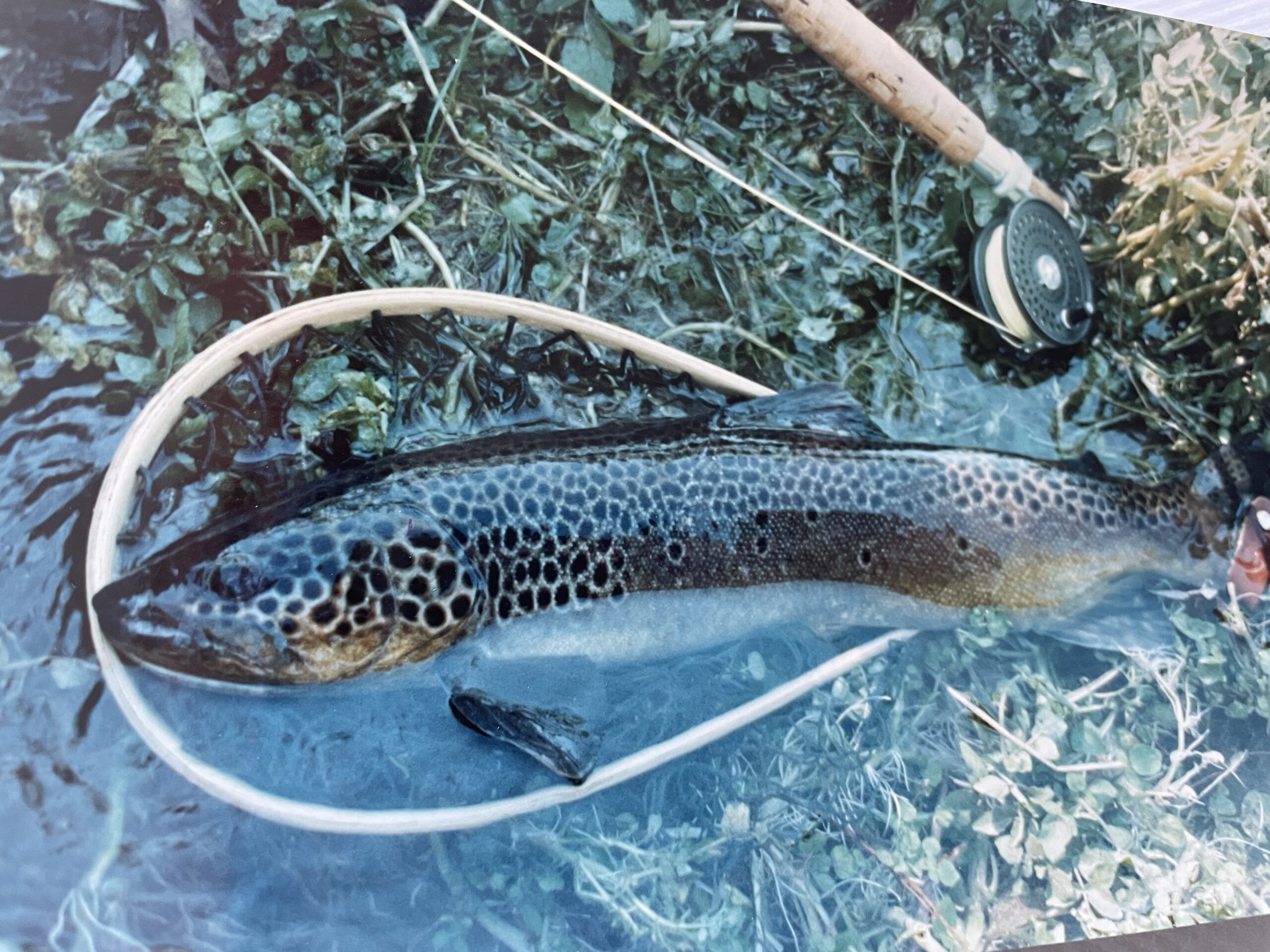

Unfortunately it all seemed like a perfect world, or was it?. Thus we can now only read about it in Marinaro’s “Modern Dry Fly Code”; and Shires/Gilford’s storied “Limestone Legends” books about these truly hallowed waters. Perhaps the only wholesome things left about this beautiful little limestoner is the Amish horse-drawn buggies that still clop down the Big Spring Road, especially on Sunday courting nights. At a cute limestone bed and breakfast, which was a weighing station during the Revolutionary War era and historical landmark named “The Field and Pine”, and owned by our dear friends the Williams, here my wife and I stayed for decades next to the old historic Amish Church at the start of the Big Spring Road. On those quiet and still dog day summer nights we would hear the teens giggle in their horse-drawn carts from the window of our room as they went in search of their future spouses. Along with the old limestone gun barrel factory near the mill and the pure limestone spring water that peculates from the spring, albeit a mere trickle of what it was due to development and progress sucking the groundwater life out of this valley, there is little left of the old days as I write this as God be my witness. But where did it all go wrong and on its way to a long and tragic demise as a result of man’s intrusion into something pure and wholesome, and then trying to resurrect it. The big fix didn’t work to the degree as planned and what is left is only a band aide to the tolerable reality that might never be- or could it?

Despite millions of dollars spent to restore Utopia after a super hatchery that dumped bio-pollution was court mandated to close, what is left today is a sad testimonial to man’s intervention into things wild and the ways of the trout. It all brings tears of sadness to your eyes. A trout stream must have trout in it- in good fishable numbers When you have countless runs and pools void of trout, or a handful far and few between, is that progress? Thus our utopian agendas to fix things don’t always go as planned.
The search for such a utopian paradise, the Holy Grail, the Fountain of Youth and Nirvana are existential concepts that are pure fantasy. Yet our mortal human existence from the dawn of Neanderthal man craves for something spiritual, pure and eternal. The concept of a God or an agnostic earthly goodness doctrine are our choices and they are as split and polarized apart as Yin and Yang. This discrepancy, along with being in a happy state of mind and spirit, have now become more elusive than ever given a very imperfect and divided world we live in. Imperfection and disruption now have become such an endemic part of our daily existence that we have become totally numb to being happy. Pandemics, Russian wars, climate upheavals and sociological despair are as common as the sun rises and sets. We are pulverized and relentlessly punished by negativity. Yet if we look for natural beauty, joy and glimmers of hope for Utopia, the natural world and the ways of the trout and salmon give us that. Their ability to adjust and balance their changing ecological worlds shows there is a higher law that can withstand the dark side of our mortal existence.
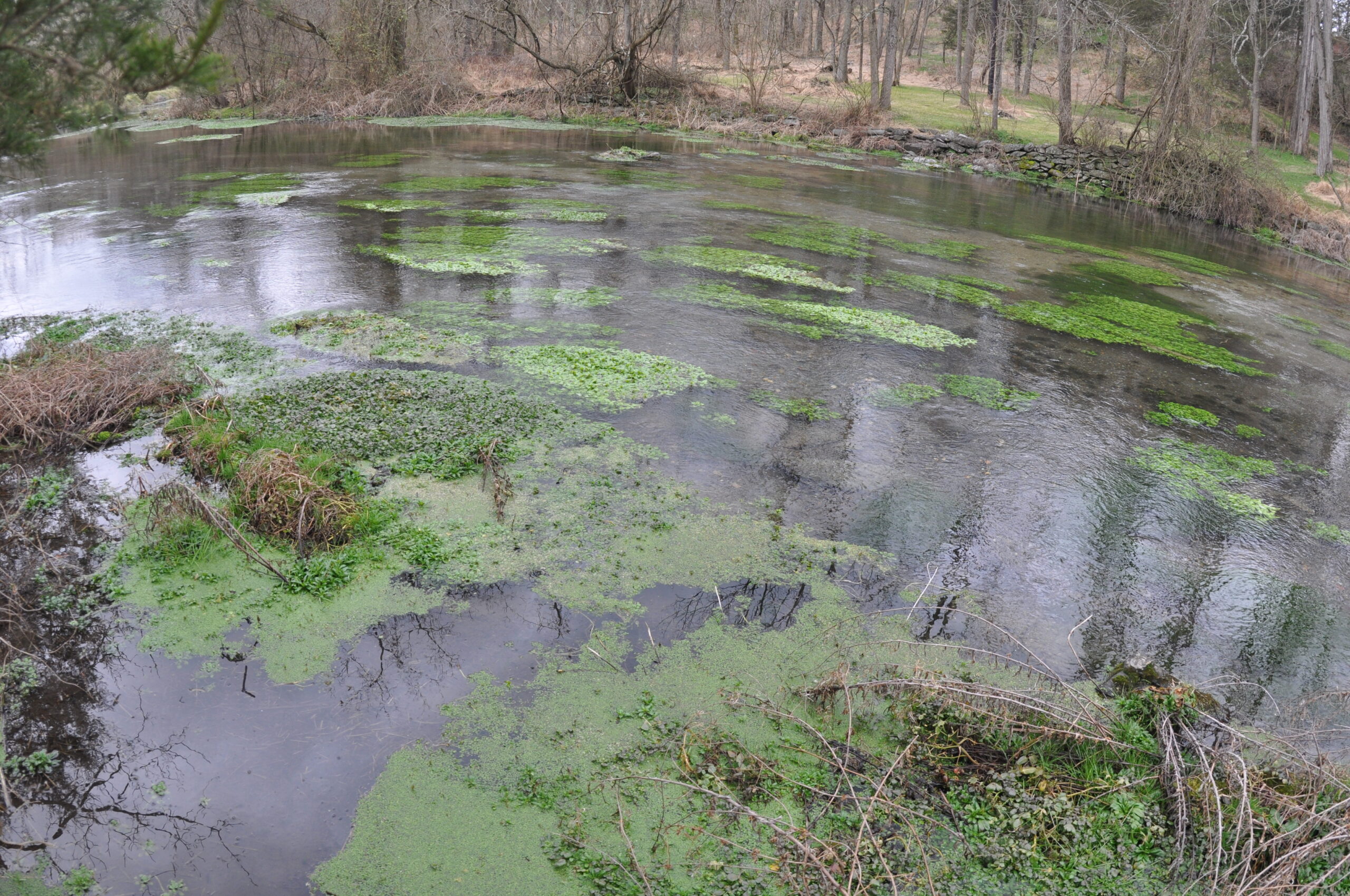
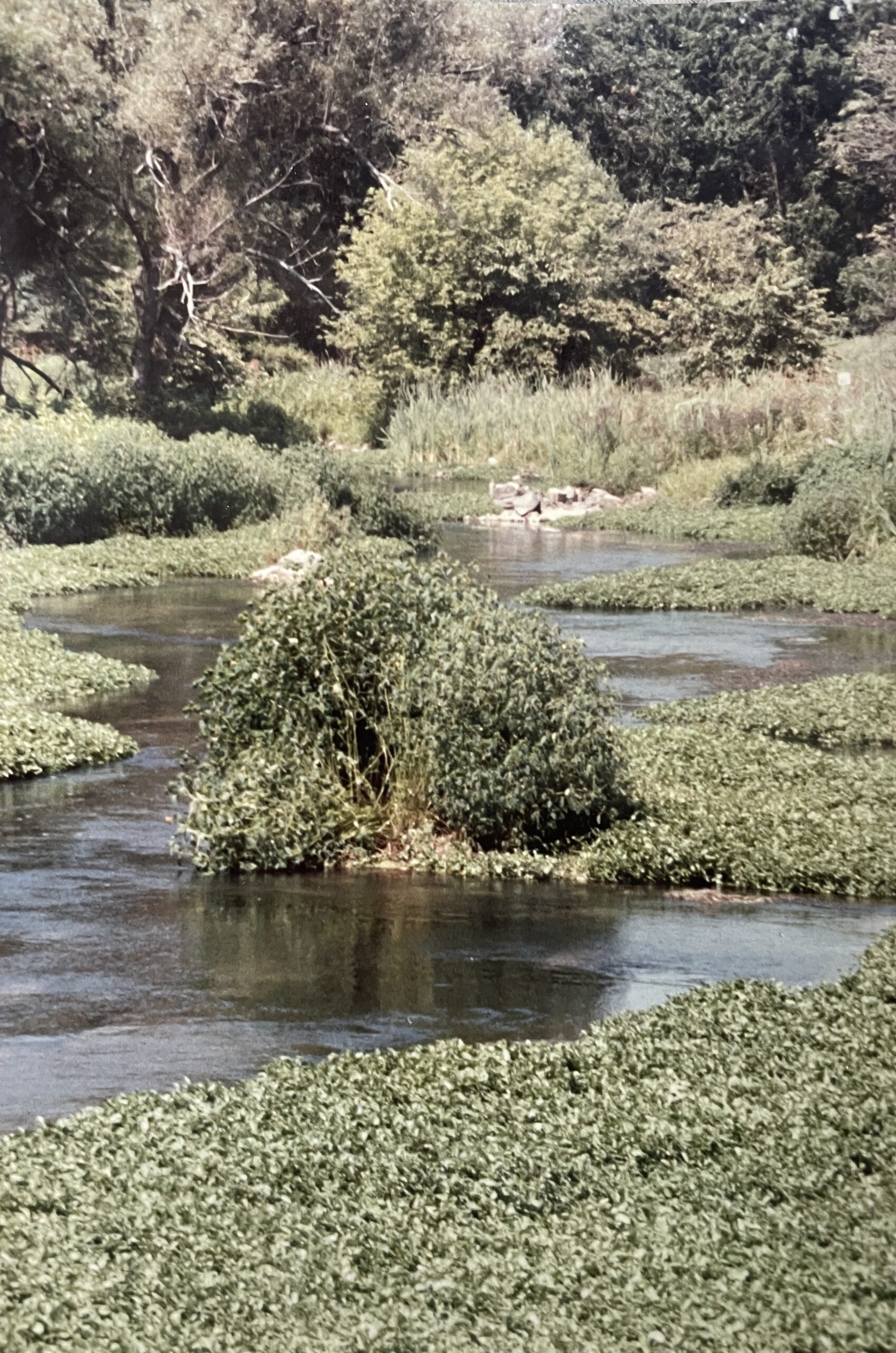
Wild trout and salmon become and stay feral through environmental stability. These periods of feral prosperity are often brought about after chaotic environmental and climatic changes the world has witnessed with the different epochs. Trout and salmon have shown creative adaptation and compensation to whatever nature and man throws at them to disrupt that feral stability. In a pure and unmolested utopian wilderness their checks and balances filled life survival strategy mechanisms are firmly glued into place. Modifications by the trout and salmon to their survival agendas, though so instinctual and seemingly effortless, only occur when a monkey wrench curve ball is thrown at a them. It can come from nature or induced from man, like the hatchery and pollution that seemed to change the Big Spring Run in Pennsylvania forever. Or was it too simple to make the boogie-man and smoking gun pointed to the PA Fish Commission mega-hatchery to be the ultimate death knell of this once great wild trout spring creek. Yet perhaps there are a multitude of reasons, which all indications seem to lead to in the continued decline and fall of these once great wild trout limestone streams of paramount significance in the lore of modern American fly fishing.
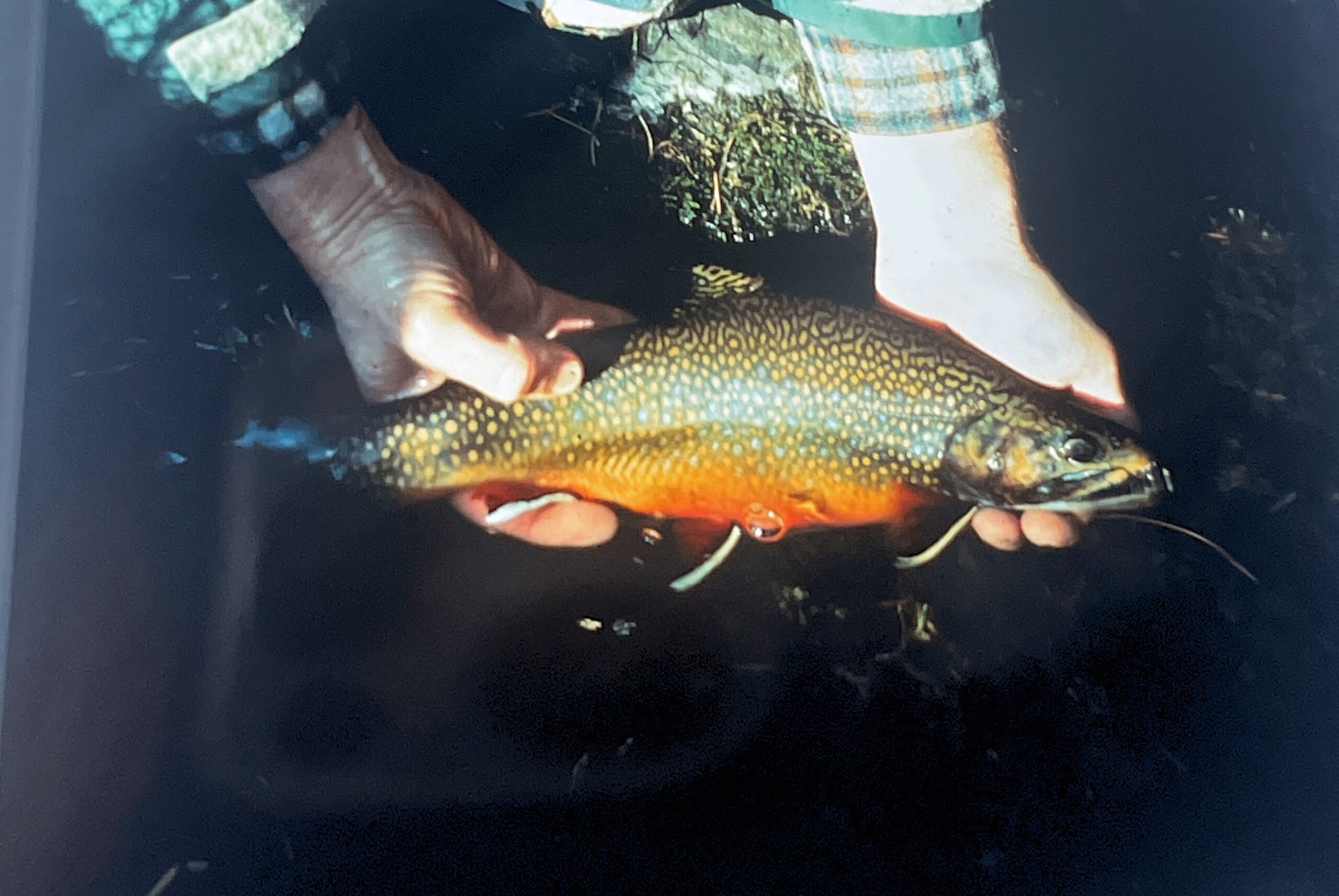
One can only look at the before and after to make the simple verdict that indicates the layers of problems that plague these gentle, innocent waters that don’t do well with the values of progress and development. Watching and hearing that Amish buggy clop down the Big Spring road, seeing the old hex signs on the barns, smelling the wood burning stoves and fireplaces on a beautiful winter’s sunset above the ridge where the last few sheep and cows still graze, all contribute to the mystique and romanticism when reminiscing about the days of yore.

Yet as one trout at dusk today smells the coast is clear from a stalking heron; or the footsteps and shadows of the few romantic fools that still fish and trample about its waters here like Moi sadly looking for Marinaro’s ghosts, and thus warily swims out from the bramble and tag alders to sip a size #28 midge on the surface, there is still a glimmer of hope that better days may come.
What is so special about these spring creeks is their beauty and simplicity as to how the trout go about their daily life of being “kill artist predators with high efficiency”, as my mentor Marinaro described them so beautifully. All these skills allowing trout to assimilate to changing climatic, predatorial and other environmental conditions, and fine tune their life survival strategies in a work of perfection humans cannot design. But today and in the past we always try to modify, redesign, and improve what nature has given, regardless if it was indigenous and intended, and all too often in vain for the sake of a higher superego, “feel good” moral calling. As such we try to re-direct and fix the waters they live in like superior gods of nature. Thankfully our pursuit of trout and salmon with the fly occupies most of our earthly time, since utopian conservationist chatter is usually for pubs and meetings, which are often as ephemeral as the libations themselves being quickly consumed. Being on the water and fishing is the simple foundation for giving us a sense of pure perfection and a code to live by. I optimistically think that if more people would fly fish, or fish and hunt in general, the world would perhaps be more peaceful and less aggressive-perhaps.
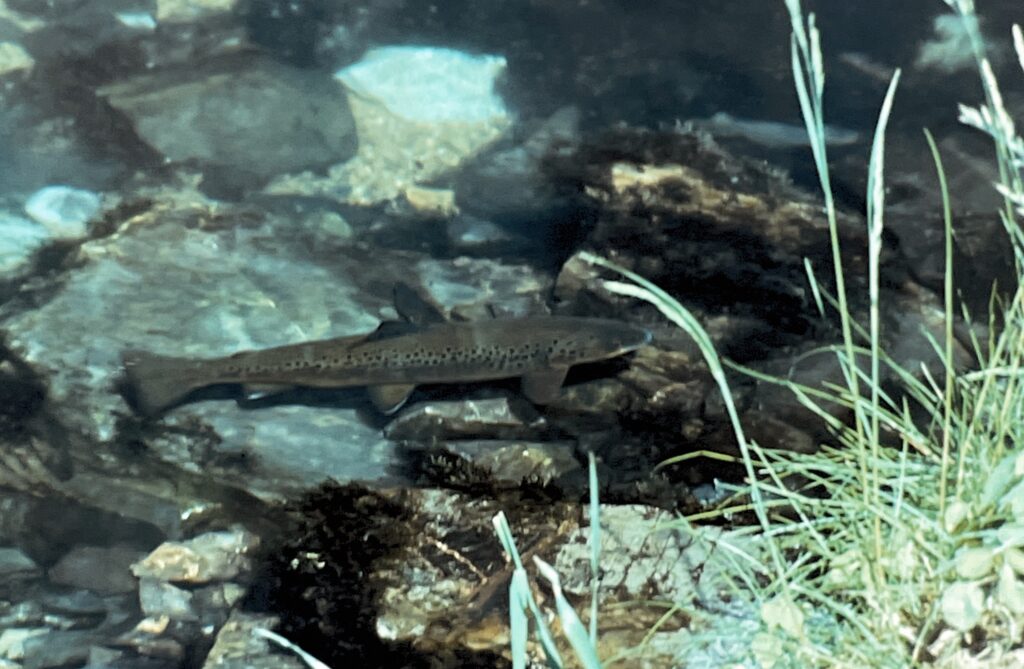
Fly fishing for trout is a religion- period. And especially spring creek sight fishing, where you peer into the world of daily trout feeding on the most intimate level as Sawyer did daily on his River Avon laboratory in Hampshire, England. It is a secret world of a trout bum knighthood that pushes you relentlessly to crack the code of the tactical empiricist inside all fly fishers. Selectivity and its phases form the trout’s credo and adjustments to rivers in a constant state of change and chaos, and thus forever challenges us to search for the Holy Grail of flies and presentations that will fool them. Hence we always search around the next bend, down the river to the next pool and hallowed waters that may hold the perfect Zen state of Utopian angling joy when that big leviathan brown takes our fly. Trout Bums are addicts in search of that enigmatic dope that never achieves satiation or fulfillment. A trout and salmon forever taking a fly is a beautiful constant we have come to depend on. We daydream of fishing while at the various monotonous jobs that we do; from surgeon to sanitation engineer, both actually encompassing skills that are similar, regardless of income. All of our hard work in order to fish and afford its soothing and addictive escape. Angling is an agenda so pure that the almighty himself most likely pondered it on his Sabbath day-off in a busy week of creation.
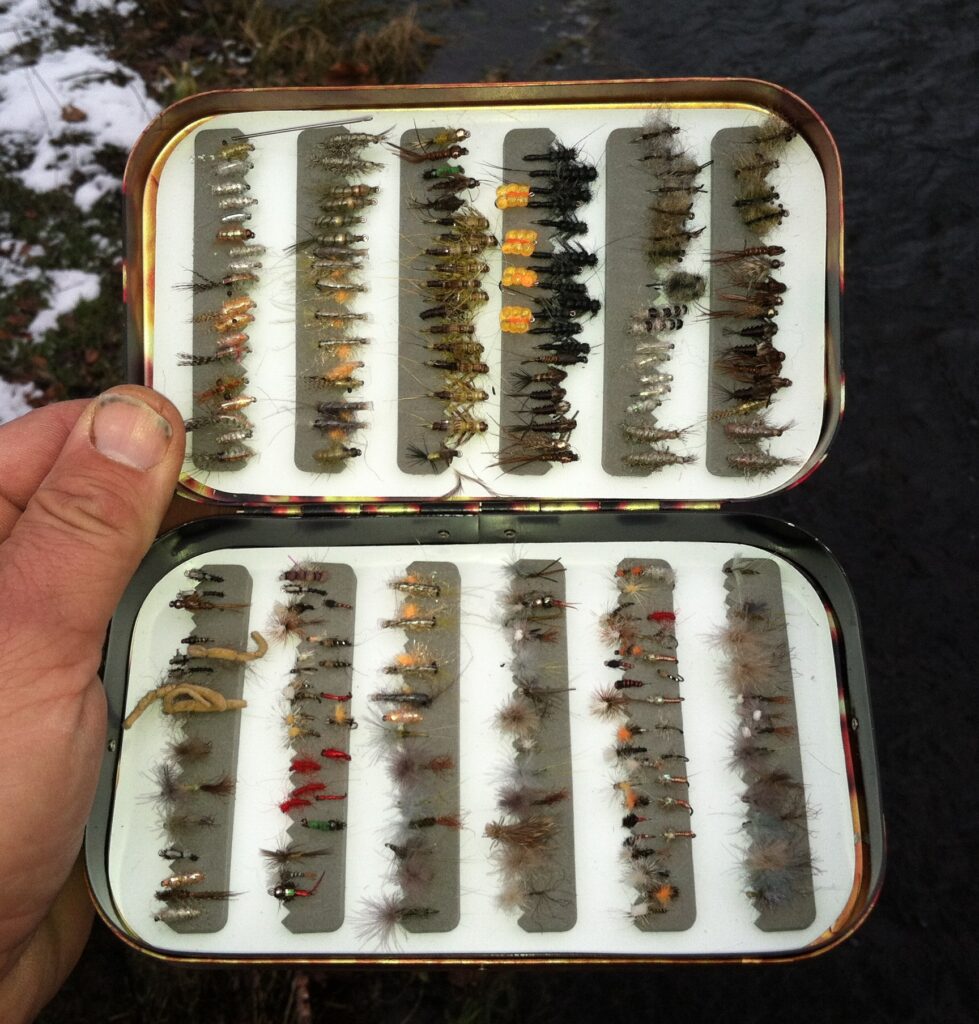
But when the simplicity of the natural world of a trout stream is tampered with by our lofty agendas for species purity, greed to grow more, and reestablish ecological perfection, that is when things usually go afoul. We tend to screw good things up, or redirect ones already broken into Stafford’s “tolerable reality” more often than being fixed. But who and what is to say is broken? The smoking guns of proof and blame as to what is the problem is more often today veiled into such a complexity of reasons, thus leaving us to often shoot from the hip at the wrong targets and reasons for the decline.
“I shall never forget the sight I witnessed at Newville…as far as the eye can see the entire surface of the water was a mass of dimpling rise forms…three or four hundred trout were a fair estimate” ( Modern Dry Fly Code-Marinaro)
Marinaro and his friends were fishing on the last day of trout season which occurred in the summer months back then. By the account of the winds kicking up and suddenly dying down to a calm placidness, the dimpling rises were most likely to #24 tiny flying ants, white midge pupae; or Pseudocleon and left-over Caenis spinners- both a common occurrence on summer evenings. These were the halcyon days of the Big Spring when all was perfect and pure, or seemed so. But things were about to change as is always the case when something wholesome like this stream possesses is wanted and exploited by many. When you have these cold year-round spring sources they become very precious. That is when man’s exploits and agendas formulate, which often have total disregard for these ideas disrupting the natural ecological harmony. Often it is when governmental fish agencies or commercial entrepreneurs all over the world realize that these unique hallowed spring-fed gems are the perfect natural source of a constantly filtered cold water resource to rear trout or salmon in a controlled hatchery environment. The hundred year saga of degradation on the Big Spring started with these hatcheries- from small private ones to the mother of all hatcheries built by the state in the end. If you find a fish hatchery, it is most always on an ice cold spring creek source.
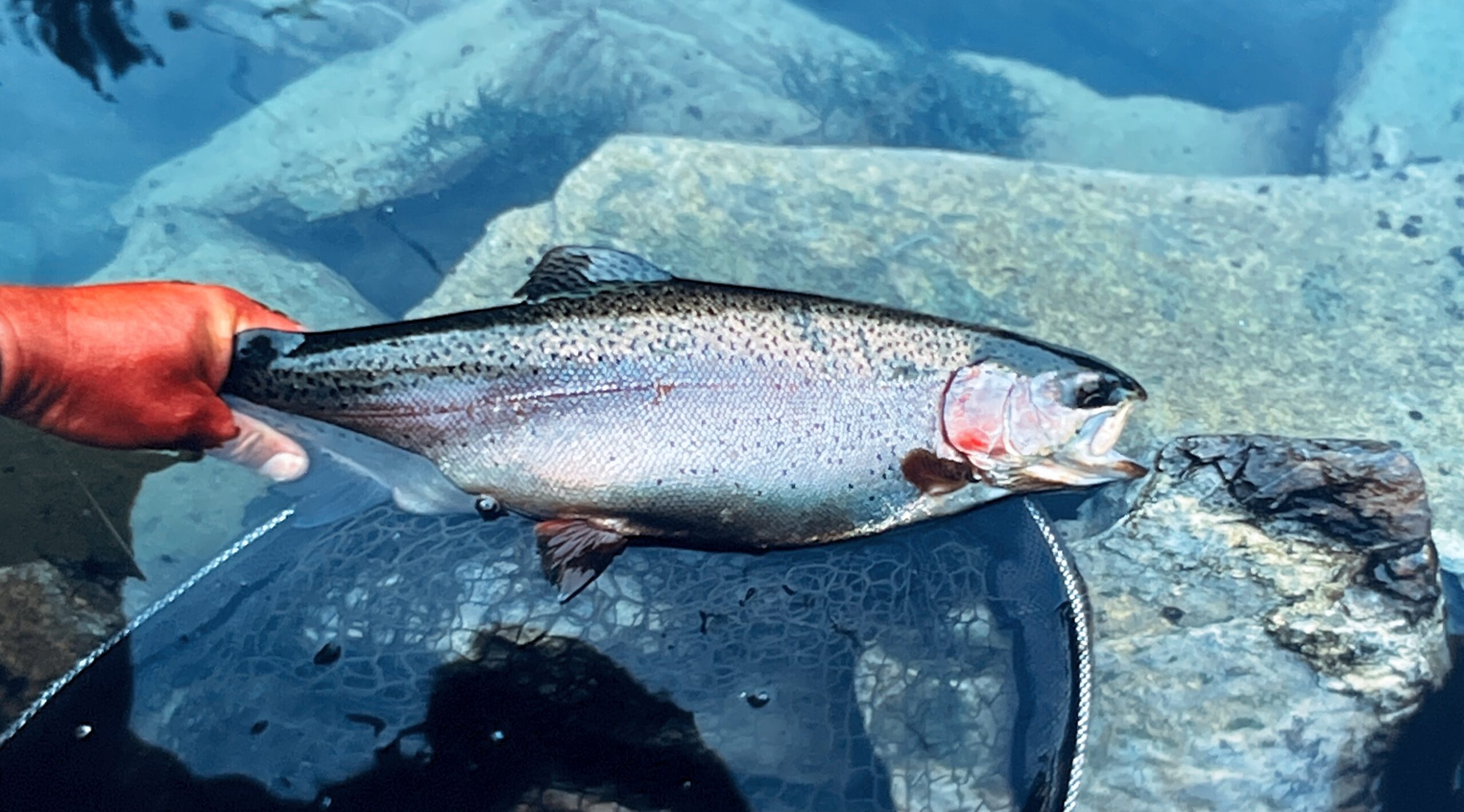
Hence the Big Spring saga is a perfect story of what was indigenous and pure in the wild trout world that was destroyed, modified and artificially enhanced, and thus now a “tolerable reality” in a state of limbo. All of this to “fit the agenda” for all to enjoy and thus grow more trout. In the pure Utilitarianism dogma : “what is good for the all” is not necessarily good for the few or one- that one being this place. And those poor were the prolific indigenous wild brook and the few leviathan invasive brown trout of the Big Spring. Today they are practically ghosts, despite that million dollar lofty goal of the grand betterment and post hatchery closing reclamation era.
After fishing the Big Spring for over 50 years, I have seen all of its phases. except the pure trout Utopia that Marinaro described in the 40’s and 50’s. In the 80’s when in my twenty’s I was a product of the glory days of the hatchery’s claim to fame; its eternal monument to the new age of bigger and betterment sanctified and embodied in the steel tanks of hatchery trucks, along with its infamous shrine- the “Ditch”. Myself, along with a handful of unique and passionate trout bums et al formed an exclusive club back then in the old millpond access lot that still stands today-one today that stands empty without fly fisherman vehicles parked there. Back then in the 80’s it was like a K- Mart parking lot crammed with vehicles from every state- until the day the hatchery music died and the trout disappeared. My club members ranged from a Buddhist nuclear engineer turned fly shop manager, a cerebral book purveyor, a retired special ops Army commando and a handful of local and city fly fishing snobby intellectuals and yuppies, moi included in the later. Thus was the esteemed membership of our motley, yet sophisticated group deemed “Ditch Poet’s Club” . Our exclusive society would appear every Saturday looking dapper as proper wanna-be Anglophile country gentleman clad in Barbour coats and hats, Le Chameau Wellington boots, and smoking fine pipes and cigars as the then emerging trendy Camo was scoffed at. One poor lad wore it and was given shit for it- its dark green or khaki until death ole boy! Eventually Camo was accepted since it blended so well in our streamside approaches in the tall tan cattails and vegetation of the lower Big Spring.

To aesthetically describe our club playground, the “Ditch” was a hundred yard artificially induced, ultra-fertile stretch of water that is usually sterile near the spring’s source if it was in its natural state. It was where the old millpond stood. In hindsight it was a trout fantasy world, a freak-show angling circus rather than a Utopia. The bio-nutrients of fecal matter and other toxins from the hatchery produced a food chain on steroids’- a nuclear trout Chernobyl one might say. The 100 yards of water below the hatchery was crammed, and I mean crazily loaded full of big brook, rainbow and brown trout that grew 2-3 inches per month on the unnatural food supply there. It had perhaps the highest density of fat, lunker trout in North America next to the San Juan or Green. But they were ultra selective to two food forms that were their bread and butter: cress bugs and red worm Chironomid larvae that fed on the organic hatchery sludge and fecal matter. On a given day you could count trout by the thousand or two crammed into that section as anglers pursued them elbow-to-elbow…actually more like two rods length apart was acceptable.
In the 80’s 95% of the fat, football-sized trout were in that ditch feeding trough like well-fed carp gorging on the fecal matter fueled fertility from the hatchery sewer effluent. But for a trout it was damn good nutritious food like thick meaty cress bugs by the bazillions. These Isopods fed off the organic matter fueled by the effluent and were happy. Picking up a hunk of chara, or elodea and the Java and Willow mosses you would literally find several thousand cress bugs and scuds crammed into a square foot. A savvy trout could eat this highly protein fueled fare relentlessly by the hundreds in one day or hour. The growth rates of the trout were nevertheless of fictional proportions.
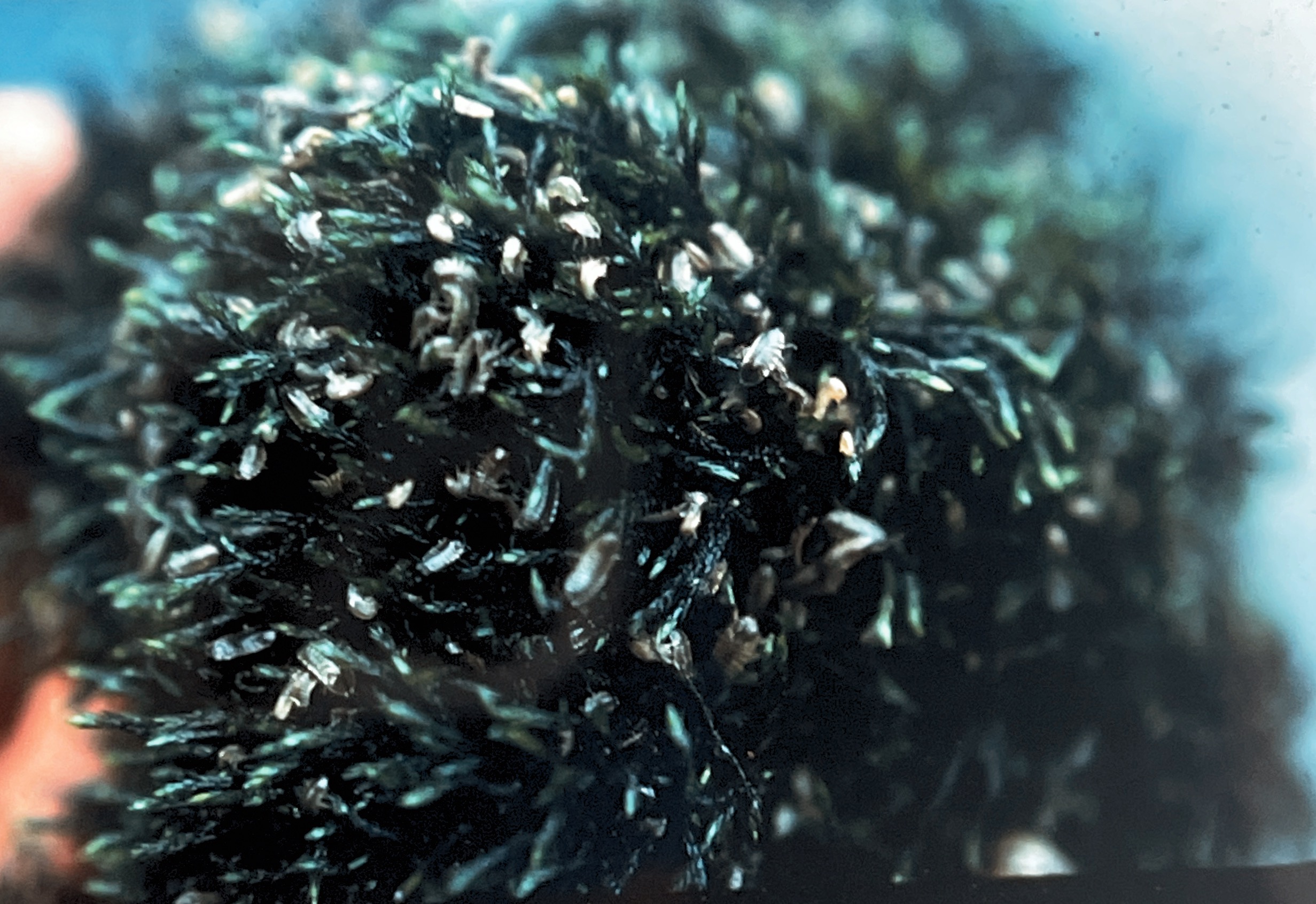
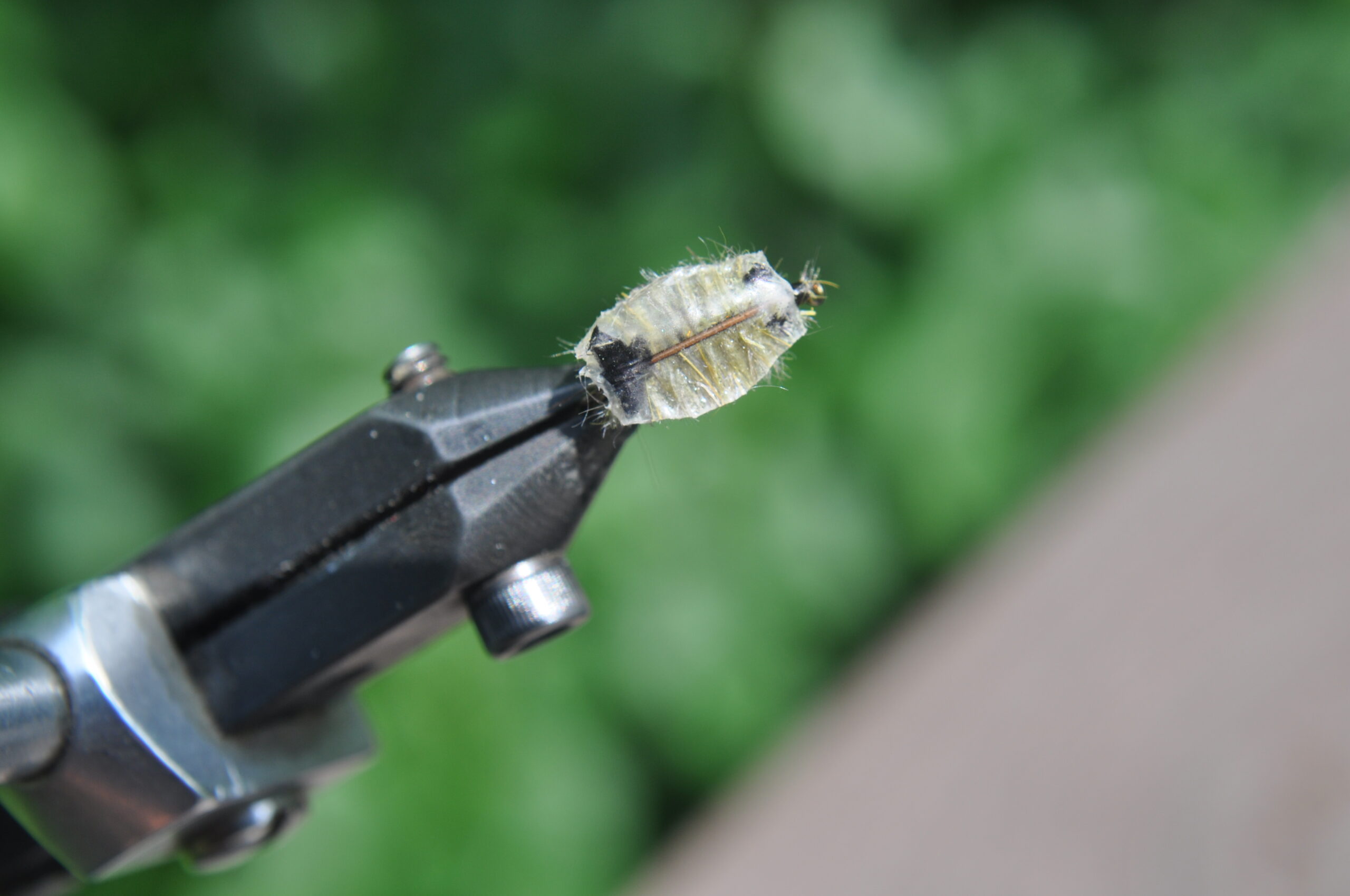
But our little Poet’s club was mesmerized in watching the hunt and loved having the chance to fool and watch these absolute trout beasts look-over and refuse our flies. It was pure addiction and obsession as you spent hours in a trance trying every presentation possible with two or three flies really only getting a look or response -those being sow bugs, scuds and midges. Refusals albeit knowing full well that you were dialed into what they were feeding on, yet yours didn’t quite look like the natural, behave like one; or was attached to a curved hook. When we needed a change of pace we often went sculpin hunting on the lower section of the stream towards Newville that was practically void of trout, except for a few rumored leviathan brown sightings that were like mythical unicorns that showed on occasion, especially after a few Scotch whiskies.
Each September brought the greatest excitement. We got to see how many hundreds of leviathan trout -some well over 22 inches, were stuffed under the constructed undercut banks of the Ditch- the ones that never seemed to come out unless at night- or when they cleaned the trout shit off the gates by the hatchery and they smelled an organic herbaceous chow time. It’s sort of like the weird but wholesome smell I enjoy when I smell cow dung- being brought up for a time on a farm is an acquired smell you grow fond of. The Fish Commission, in order to keep the façade of native purity and a “brook trout restoration area” in the Ditch area designated by signage only, would after Labor Day electro-shock all the browns and rainbows, net them and take them down to the lower Big Spring, sprinkling them above and below the old mill damn in town. There was a low fish barrier in the first parking lot below the Ditch bridge that was constructed to keep these invasive trout from entering the Motherland of Aryan purity of the indigenous brook trout sanctum of the ditch. These poor fish were mainly hatchery escapees and loved being in the ditch close to their incarcerated brothers and sisters in the concrete jail The barrier was a joke and could easily be breached by the “relocated” trout deemed inferior and “undesirable”- scary how the new age fish nativism movement brings a haunting reminiscence of the Third Reich. Within weeks they smelled the lovely fecal matter of the hatchery and knew that was their chuck wagon place to be, and thus were right back were they wanted to be -home sweet Ditch!
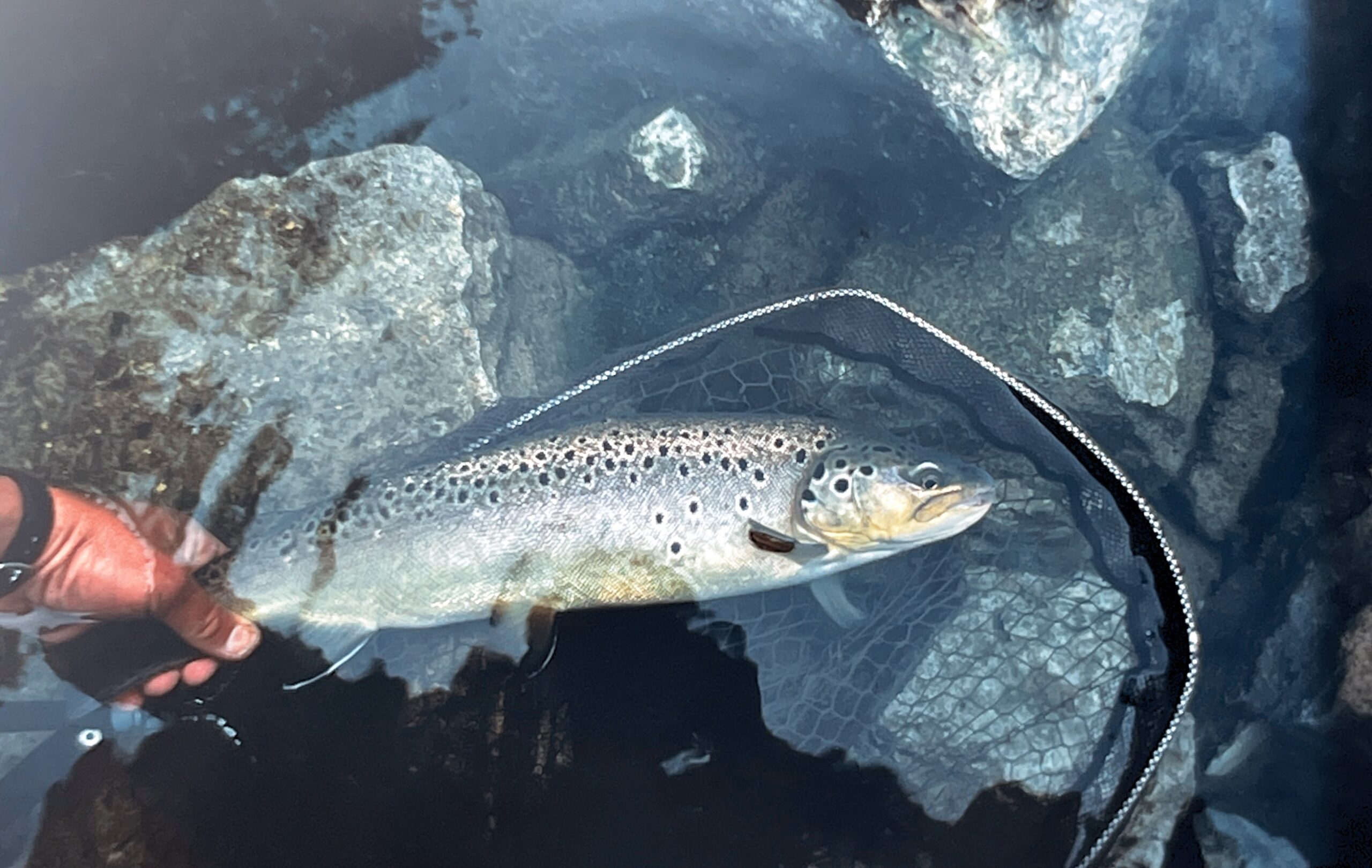
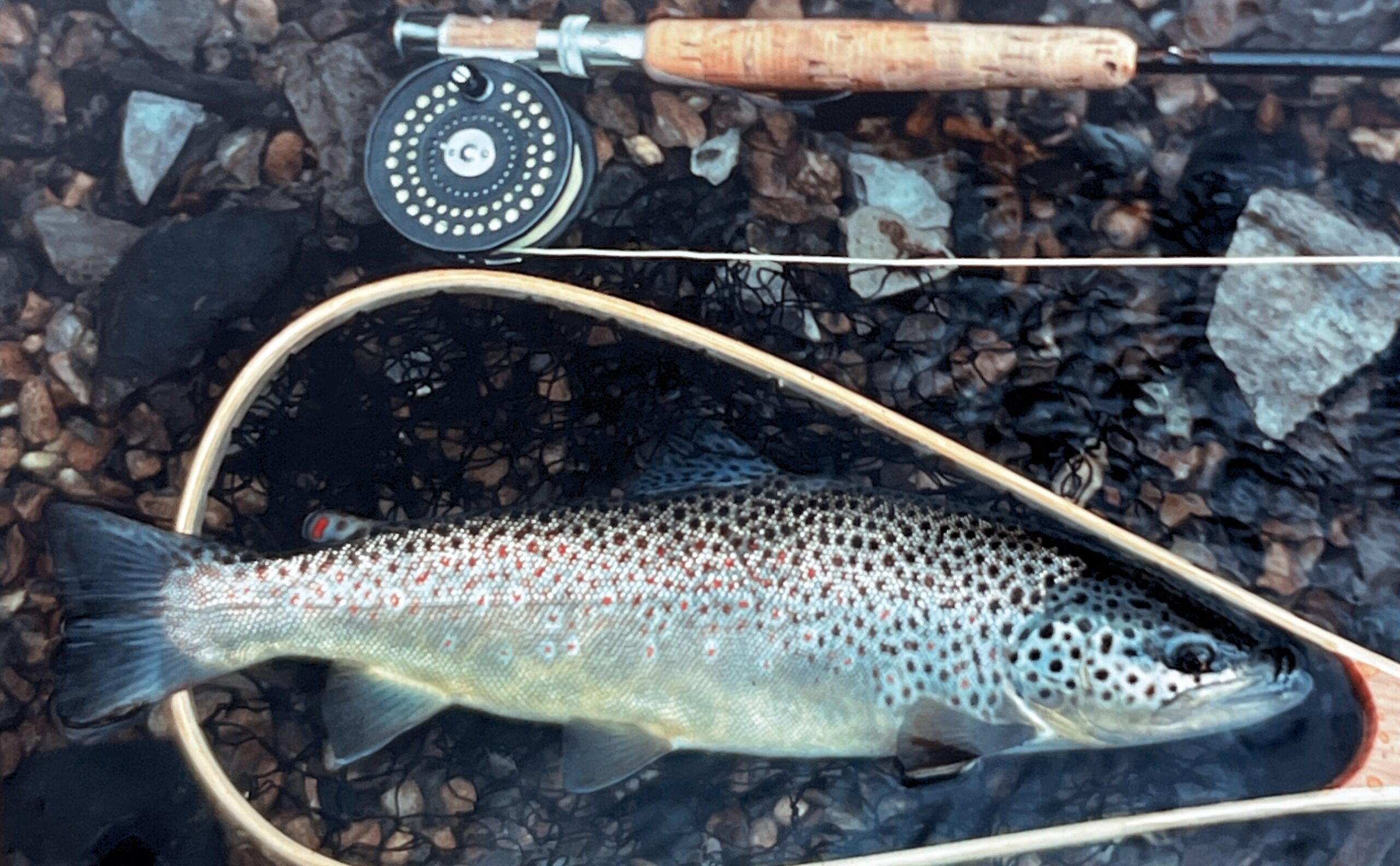
But some PA Fish Commission hatchery browns were stocked below Nealy road further downstream, when the hatchery had surpluses, and thus provided the rusty pick-up truck, NRA stickered, Wal-mart power bait and Velveeta cheese flinging hatchery chasers with stringers of fish. Our snobby elitist club eventually got a little action terrestrial angling with beetles there later in the summer, for the few browns that held-over and survived the slaughter of plastic worm canisters littered along the banks. Sadly some things never change even today. Matter of fact the later is growing in numbers!
In our Ditch Poet’s Club we would spend more time pondering the limestone spring creek tactical approaches we read about in the “Code” and “Ring” , both Wagnerian masterpieces of our limestone god Vincent, which we tried to emulate by our Scotch-induced verbal eloquence before actually fishing and implementing them. Raising a toast of fine Macallan or Glenfarclas whiskey at 10 AM in Solo cups, we would speak at great lengths about the intricacy and exclusivity of our cress bug, scud and midge patterns as to how each member’s pattern was better than the other’s from our weekly re-inventions at the fly tying vise. After several drams we would be quoting the essential Skues, Sawyer and Halford writings in our chalk stream ramblings, usually polishing off a bottle of single malt Scotch whiskey before we even got our lines wet. We met every Saturday morning regardless of season or weather. The usual bottle of single malt, Scottish smoked salmon and bagels were spread out on a tailgate or hood-streamside fare I would “borrow” from the kitchen walk-in coolers at my hotel. Our club’s arsenal would fish the latest Scott or Orvis graphite, or old school bamboo vintages. Three reels were only approved: the Orvis CFO or Sci Fi / Hardy. We would mock other angler’s styles and equipment, ridicule and critique them; or show a peculiar interest in the ones that actually managed to catch a nice fish. These chaps would be summoned to our parking lot bluff of our self-indulgent glass castle and receive invitations to join our club since they proved their worth. But all new members had to show up and be initiated bearing gifts of a new and intriguing single malt whiskey, or clever new fly patterns.
But for any group or cause to exist you needed an antagonist. Besides the local Velveeta cheese wielding, hatchery truck chasing, beat-up old pick-up truck poachers, our common hatred was channeled towards a local old-timer gray beard that we called “Salty Dog”. He drove a battered red truck and killed big trout every Saturday. Once out of a fit of Scotch induced anger and due to his wonton killing of a big brown I had released several times and adopted it as my pet, I did a very mischievous thing towards him which I’d rather not say in writing- sorry ole chap! Though we all belonged to Trout Unlimited, we viewed our Ditch Poet’s Club as one step up and exclusive, as was the Harrisburg Fly Fishers and the Houghton Club in England. Except our club was open to ladies, especially good looking ones mind you!, since we were all single and forever on the hunt for attractive females.

Yet the Ditch trout weren’t easy- each one had to be earned. And at times they were downright impossible to fool when they were binge feeding on the micro details and drift of the real deal. Here and on the Letort is where I learned the formative stages for my selectivity obsession I wrote about in my book. I also witnessed countless “legends and celebrities” who occasionally visited the Ditch, with the likes of Lefty, and the State College icons of the 80’s, and the guys that write the code: the staff of FFM magazine. They got their butts smoked and were humbled and skunked on those damn savvy, hatchery mutt, sewer-pipe trout. This showed that in the grand scheme of selectivity how quickly a hatchery trout could act wild and wily if given an abundant food source to fine tune its predatory instinct to. The Ditch pig trout, being caught and released so any times, learned to take their selectivity to a higher level. They would often only feed on red worm midge larvae that laid on the sandy bottoms, ignoring perfectly drifted patterns. Cress Bugs needed to be bounced and skipped off the vegetation, and timed perfectly with the trout’s feeding intervals. All this was visible and allowed you to study their foraging in-depth. When the hatchery personal would clean the hatchery effluent sewer grates, the trout would go berserk like dogs at feeding time in a kennel. Then they would eat tan pieces if hatchery sludge/snot loaded with Chironomid larvae. A big cream shammy or a tan fox belly concoction I called “The Big Spring Mouse” ( which appeared in my first fly fishing article and in detail in my Selectivity book) was kryptonite to the big trout for a period of a few minutes- sort of a shammy fly. The fish were ultra tippet shy and 6-7x was the norm-5 x was tow rope. The neat thing was that you could watch every head and fin quiver, every eye movement of approval or mostly shunning. But it was mostly disapproval that the trout gave to your fly or presentation. You learned a ton about trout behavior in this aquarium think-tank.

The big trout circus ended when the hatchery was court ordered and put on notice for its polluting of the stream, and literally making the rest of the Big Spring most likely barren and sterile from its toxic effluent from the Ditch down. Two biologist activists who were fly fishers; in the likes of Dr. Jack Black and Eugene Macri, started an entire movement to reclaim the spring as they spurred several powerful conservation groups like the DEP and TU to spearhead the attack to shut down the polluting hatchery. The newly formed Big Spring Watershed Association drew-up a massive restoration program. Hundreds of thousands of dollars poured in and were spent on stream structure improvements, comprehensive and expensive environmental studies, brook trout genetic priority studies and theories were thought-out; even the right sized gravel for brook trout reproduction was put in place. All to chase a dream that might never again be realized.
But what is left today?- a very ultra-clear, perhaps too pure and sterile trout stream that lacks the amount of trout it had in the past, albeit they were from an unnaturally induced situation. However back then you at least stood a good chance of catching a fish. Don’t get me wrong!, the few wild rainbows there today are stunning and beautiful, but you need a PhD. in being a super elite spring creek angler like guides Neil Sunday, Eric Naguski and Tommy Baltz in order to catch one; or even get close to one to cast to. That is also dependent on the day the few fish are out and feeding
Though as a with all feel-good stories, after the restoration and hatchery closing, there was a brief decade of fast growth and enhancement. The brook trout -though not the original indigenous strain, started to naturally reproduce with success. The rainbows went wild immediately and were the fastest to take over with some very large rainbows cruising the lower waters that once stood barren. The brown trout used the lower more wooded waters just above and below Newville dam that had access to the Conodoguinet for their massive need for larger carnivore prey in marginal trout waters they love, along with deeper sheltered wooded habitats. All things seemed to be going well-or was it.
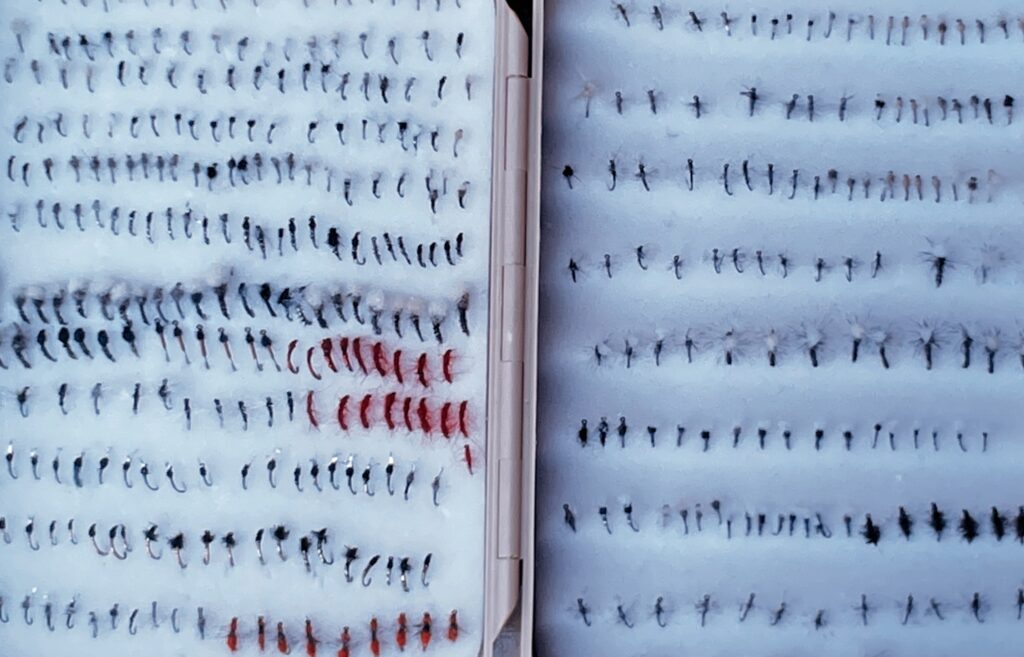
But as of today, 2023, it is a practically a vacant trout stream in vast stretches. After just spending a few days on these waters before the New Year of 2023, I was shocked and amazed by the lack of trout in the entire system. You could walk forever over prime trout water real estate and see nothing- or every once in awhile a glimpse of a tiny yearling rainbow or brookie. The few big rainbows are concentrated in a specific area all anglers flock to immediately and are usually tucked well under what little cover they have. A few smaller spawning brook trout were still on redds in very few spots, but nothing like the numbers from past decades going back to the hatchery days-or even 8 years ago mind you! Yet the waters look healthy and vibrant with vegetation that contains food. So where are all the trout? Where were all those dozens of big fat wild rainbows that were still around when I fished it back in 2015? There is still a few there. But where is the Big Spring Watershed Council and their activism and lofty goals set up by their hundred page restoration plan? Who is monitoring this special place in real-time 24-7? So many questions need to be addressed. In hindsight, the PA Fish Commission is probably laying back , sulking and licking their still raw wounds from the debacle and drama it was put through to close the hatchery, and most likely saying , ” See!…there is your progress!”
For a trout stream to be viable and have value, where anglers embrace it, it must have trout in it in healthy numbers-period. I was very fortunate to spend the day with one of the most knowledgeable Cumberland Valley limestone expert and guides I have met in years: Eric Naguski. He is also a trained aquatic ecologist and entomologist. According to him and his words, which I have the highest respect for, there is a big poaching problem and next to zero law enforcement. The big rainbows were everywhere ten years ago and providing wonderful selective trout sport. I caught a wild beauty of well over 20 inches on a #20 WMD red midge pupae fishing with my former book editor 8 years ago. As the wild rainbow population grew, and absurdly in another foolish attempt to recreate brook trout Utopias, the state biologists were contemplating and proposing for the allowing of indiscriminate kill of these beautiful wild rainbows in these catch-and-release, flies-only waters. All in an absurd agenda for them to not put competitive pressure on the chosen indigenous Holy Grail- the brook trout. Yet the rainbows were the fish providing the sporting opportunities. They were also healthy and beautiful trout where every wild one is sacred. Yet in the purism of the new indigenous crazed science they were being asked to be eradicated by the fisherman that love them. Totally Insane.
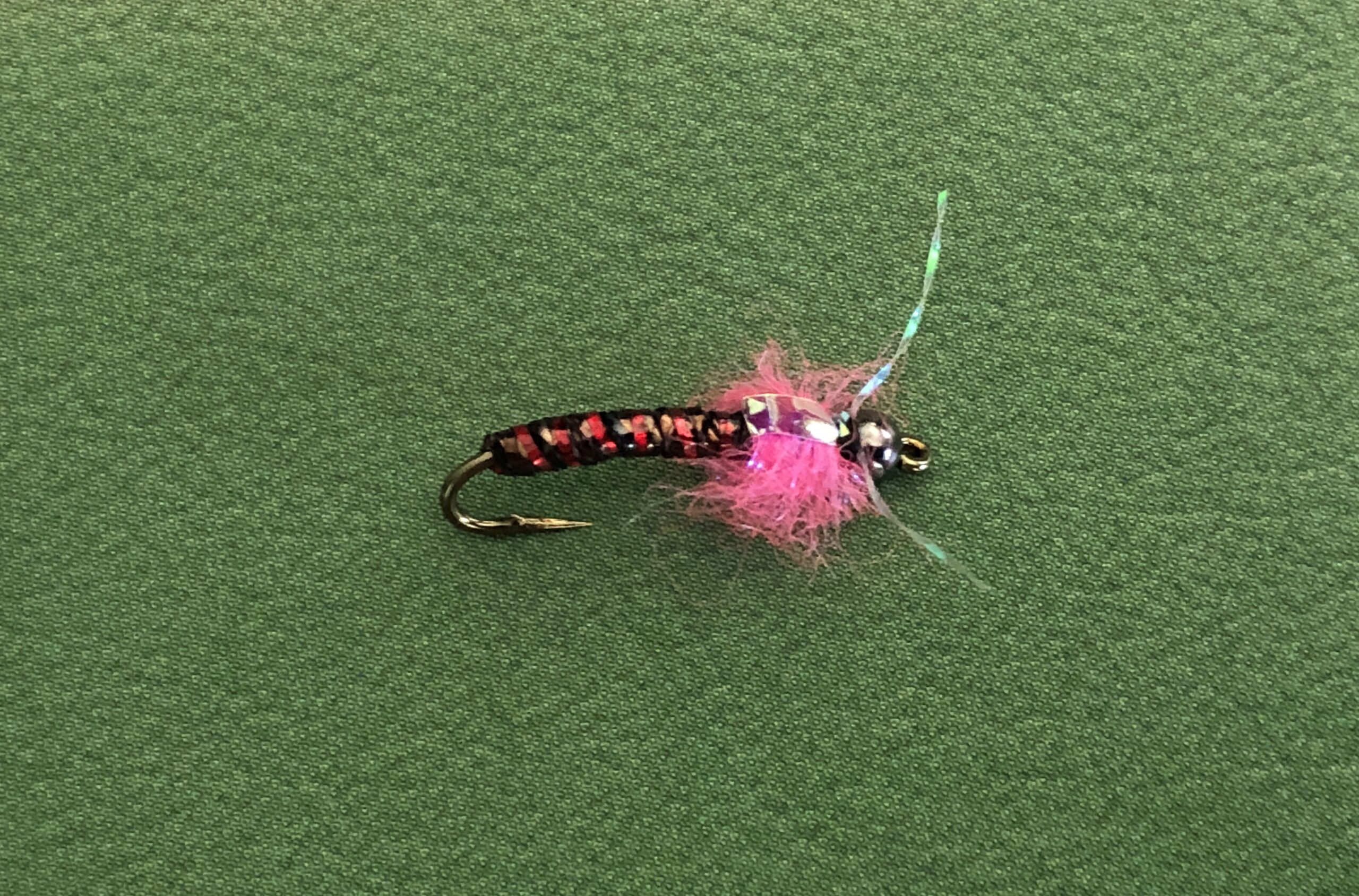
As I walked the stream with Eric and my son Peter looking for trout targets to cast our sophisticated fly patterns to, as I did with my Ditch Poets Club cohorts decades ago and rekindle sentimental journeys, we only found a handful of rainbows concentrated in one small stretch of water- hard to fathom from the plethora that I experienced a decade ago. About 4 of them were large wild rainbows- years ago there were dozens! Is this the result of improvements the likes of millions of dollars and the drama that ensued to restore the damage of the hatchery years? And when I seriously mean a handful of trout spotted- I meant a handful! The shallow crystal clear waters of the Big Spring allow you to see almost all the fish. Hidden structure is rare and far and few between until you get further downstream, where there seems to be a lack of fish also. Watercress beds can hold fish occasionally, but due to their complex root systems and tactile tropism challenges that trout have usually with them, they dont allow for too much security- as boulders, depth and wood seems better.
A “Tolerable Reality“
We can’t erase history and undo the damage or occurrences of a century and a half of past abuse- especially with a fragile little limestoner. We can only see to it that what the natural evolution of the trout and stream has in reality given us, despite abuses, is carefully allowed to play out with our protection and watchful eye. What is happening to the Pennsylvania limestoners is an endemic problem occurring all over the planet from overpopulation, overdevelopment, sophisticated agricultural pesticides, climate change and man trying to conquer nature or redesign it. One thing a limestoner has to its credit is its constant flows and temperatures from subterranean aquifers. These might be the last coldwater refugee trout have in a steadily warming world. These are less vulnerable to climate change as are freestone and tailwater rivers that can rage from floods or run dry from droughts. Yet limestoners are having problems. Development sucking ground water supplies and runoff from roads and agriculture are prime culprits. And when you make them too pure and naturally sterile, they suffer in their food chain supply. Could this be the case once the hatchery was closed?-perhaps. In the old halcyon days of Marinaro’s brook trout Utopia, there were several smaller private hatcheries dating back to the turn of the 20 th century in operation along the Big Spring, along with a big mill production at its source. All of this being bio-effluent sources of various kinds versus the pure subterranean sterility of its spring source today- something to think of.
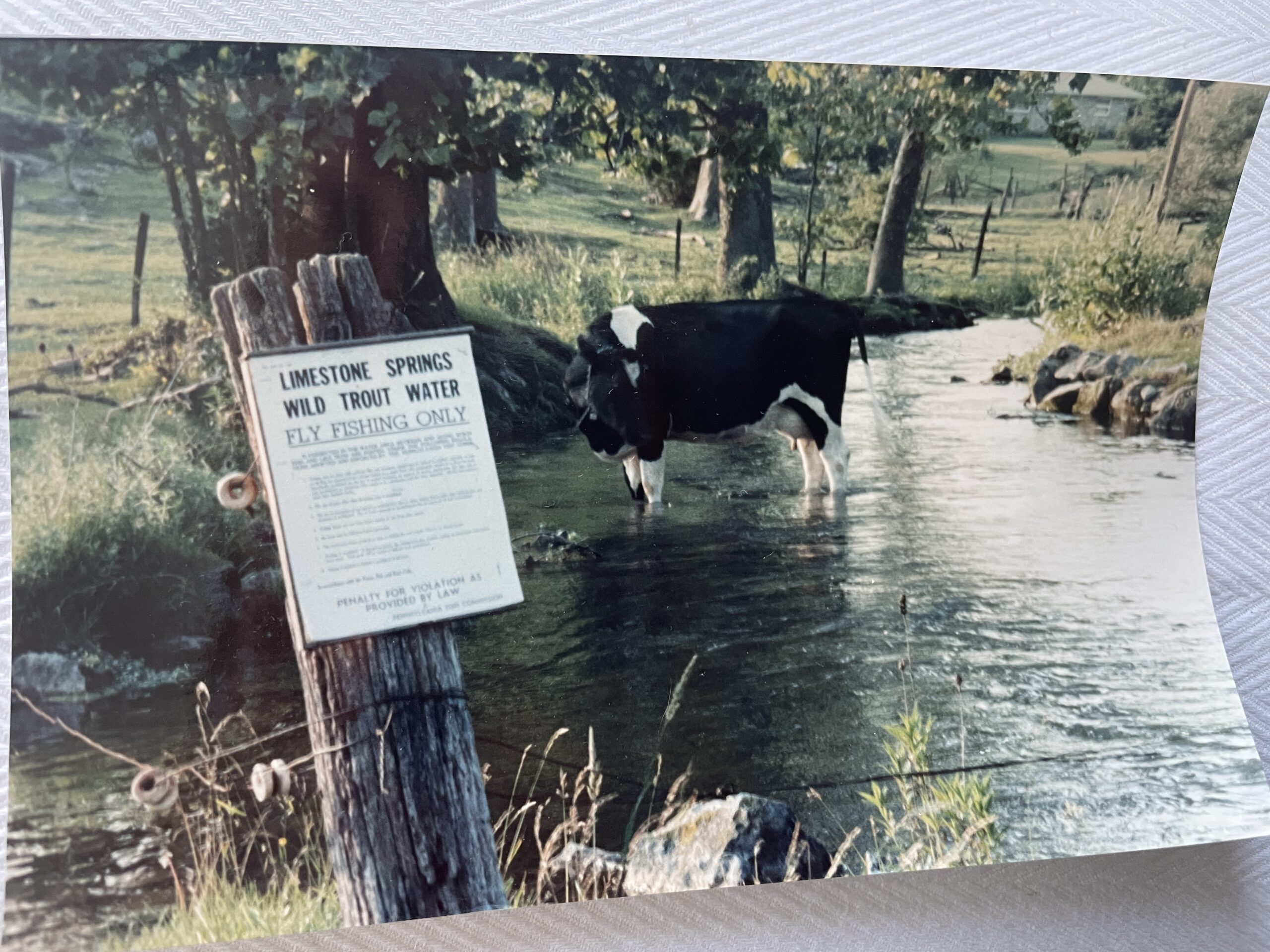
“The best thing that can happen to a limestone spring creek is for a cow to come and take a big crap in it!” ( Vince Marinaro- Harrisburg Fly Fishers)
The “tolerable reality” that Stafford quotes at the beginning of this piece is exactly what we are left with today on the Big Spring and furthermore on any other former glorified trout and salmon river around the globe. Especially on the Big Spring, since we have a bitter cocktail to swallow given all the drama of the past to stop a way of hatchery and artificial existence, jump-start and redesign Utopia, and in the end be left with something very far from the desired result, which frankly is very dismal. What it shows is that lofty goals, nativism and purity, and our relentless feel good agendas don’t always fit in with the ways of the trout. Maybe that bastardized, trophy fish filled “Ditch” was the best the Big Spring would ever become in the modern era, given all the sins of greedy agendas violating its natural ways and man’s betterment were committed- sad to say!, and apologies if I offend anyone.
Lofty standards are meant to be challenged, despite nobody really wanting to do that today. We just blindly follow these ethereal desires without reality checks. At least a person could still catch a nice big, fat, healthy trout of the three species in the old Ditch days on a consistent basis, something my new to fly fishing son Peter would have loved to do. Nice fat, colored-up and healthy ones which you still had to work hard for and pay your dues- but still catch with some fair degree of regularity. And there was significant natural reproduction back then also, with chosen brook trout and browns and rainbows. Looking through my old slide transparencies is a testament to that. Instead in our new tolerable reality not being left with some desperate for a hook-up angling opportunities to catch a fish to try and fly snag a scared shitless big rainbow with a Double-D or Drunk and Disorderly streamer on 4x. To clarify, I am not condoning and am fiercely against the polluting and artificial nature of the hatchery past. And of course I am in love with wild trout and all things that foster their survival and betterment. But maybe the hysteria of the past could have been looked at with more realistic and less lofty goals to find a healthy median.
Pennsylvania’s Fish Commission still operates several fish hatcheries on Spring Creek in State College. And it is still teeming with wild browns in good numbers. Browns love rich nutrient laced waters which are often fueled with fecal matter/sewer/septic water influences what enhances fertility’. As long as they are not at toxic levels, they heighten the food chain and food sources available there. Salmo trutta have learned to evolve with civilization since the dawn of man-hence my title of making them “civilization’s founding fish” in my Nexus book. One just needs to walk through the streets and carrier canals of Stockbridge, England; were the septic canals and effluent from the homes and businesses in the town may drain into the carriers of the River Test- they teemed with large brown trout that hunted the waters like pets eating the bread thrown to them by tourists back when I visited them in the 80’s! Also it is interesting to hear stories of large wild brown trout fisheries in their glory days on the Au Sable and Battenkill Rivers before new city sewage treatment plants were installed.

Perhaps brook trout were forever meant to live in primordial wilderness and pure places. Dealing with development and so-called progress was never meant to be in their life survival strategies and exceeds their tolerable limits. The Catskill legacy is a testimonial to that.
We Talk “Wild” – But Don’t Walk on the Wild Side
” From all the accounts of early fishing in the local limestone stream, there is one significant fact that stands above all else. The streams carried great numbers of large fish and comparatively few small ones. It seems that nature’s pattern without man’s intervention is the maintenance of many brood fish with a relatively small supply of yearlings steadily developing. It is only natural that fish grow larger and older when there is a minimum of killing” (Charles Fox-Harrisburg Fly Fishers Papers 1947)
So there you have it. Accounts by the dean of limestoners as to the state of these little gems back in the 40’s and 50’s. Can we honestly say that is the case now?-definitely not. If anything there is a stunting of wild breeders and more smaller fish than the beasts Marinaro and Fox hunted on the Letort and the other limestoners. Sure a few large wild brood stock fish are caught each year as they sustain the population. Thank God they are now protected from harvest when they are most vulnerable by new PA laws spearheaded by guide and naturalist Eric Richard governing marginal trout waters, where they migrate to in winter months to feed. But to see or catch a large wild brood stock fish is becoming less of a reality. And only a chosen few that hunt them relentlessly all year long find these unicorns- thus less than 5% of the limestone anglers experience them. Paying your dues is still highly respected and to be a tactical wizard is one thing. But when those fish are simply “not there”, that is the crux of the issue. And being there in a reasonable healthy quantity to make a trout stream a viable fishery that people can enjoy and catch a fish on occasion if they hone their skills, is the reality the limestoners are currently in.
Sadly, the legacy limestone waters of sanctum like the Letort, Big Spring and Falling Springs have become mere nostalgic shrines today. On any given day they are usually void of fisherman. Parking access stands empty because of their dire fishing conditions as a ” viable trout stream” . I don’t mean to hurt anyone’s feelings, only stating facts. But yes, if you are a spring creek elite and devote a shit ton of time to them like Eric, Neil, Tommy, Brian and a host of very fishy dudes like the other Eric, they can teach you the fine art of spring creek hunting. And when the stars align you can find a wild unicorn on that blessed occasion. But these fragile little “true” limestoners are shrines we make pilgrimages to for nostalgia and romantic urges to see the waters that Marinaro and Fox wrote about. I visit them to rekindle the joy of my past days there and the many wonderful memories of my tutelage into the selective trout passion. But to just give up on them and drink the bitter cocktail of a tolerable reality is not acceptable.
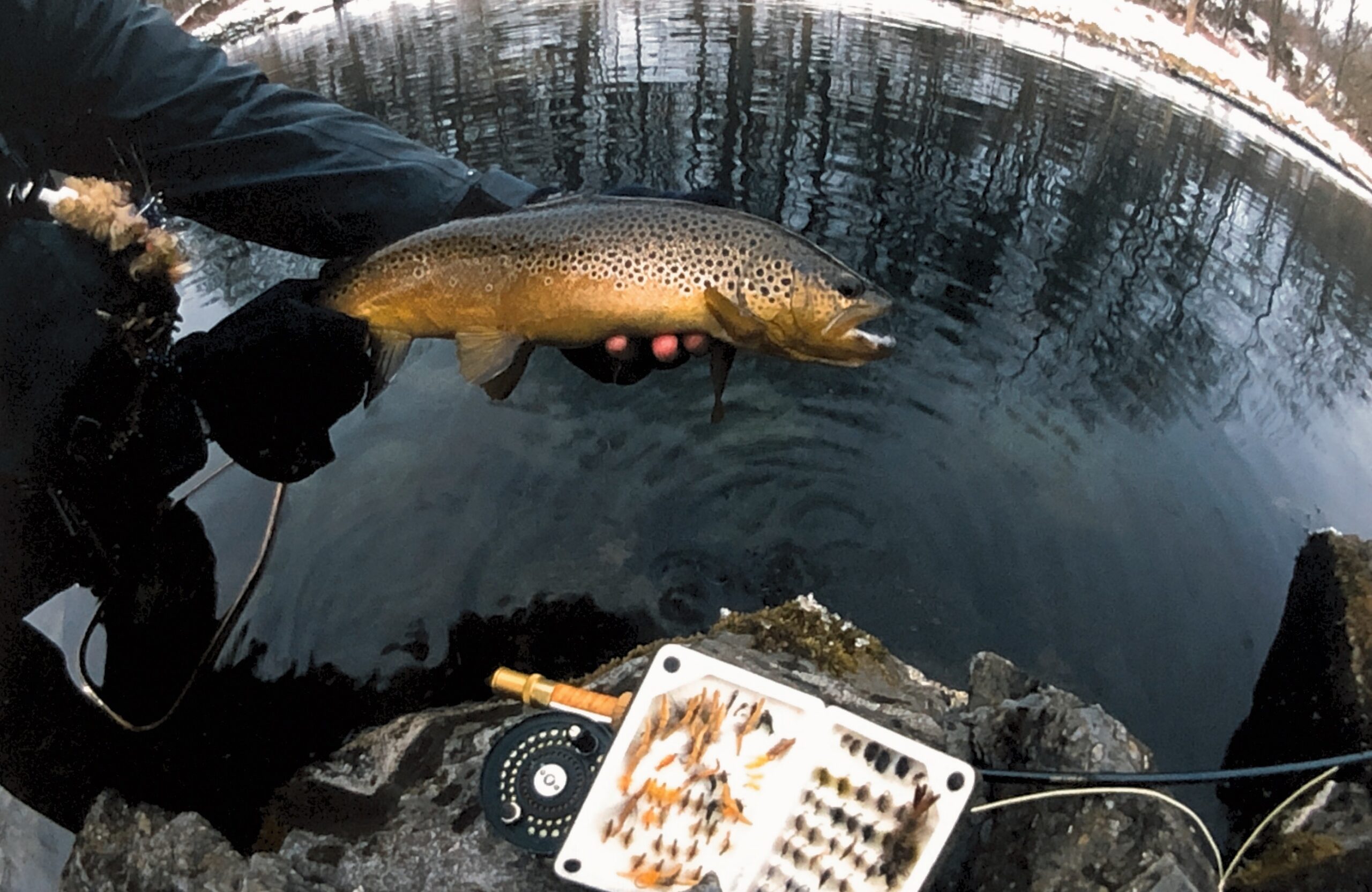
Yet we must still walk them and fish them in hope of catching these unicorns- which are still there. The lovely fusion limestoner: the Yellow Breeches, has become the stream where anglers can still catch trout, both plenty of stocked ones, along with a growing and substantial wild brown trout fishery. The key is finding out what makes those three true limestoners “tick” in a healthy splendor, where the fish grow larger and more of, procreate with high degree of consistency, and provide a valuable fishery that can be fished with some degree of success . It only happens with intense protection and a watchful 24/7 eye, not just when there is another chemical spill or tragedy.
When I visit the Cumberland Valley and see cars parked along the springs, my first desire is to see who they are and chat with them out of curiosity, since I still have a strong degree of pride and sentiment attached to these waters. ” I never fished the Letort, Falling Springs or Big Spring, always read about it”, would be the common response I would hear from an angler parked at Bonnybrook or elsewhere with an out-of- state-license plate. On any given day you can cruise the pull-off areas on these streams like Fox’s meadow, Quarry meadow on the Falling Springs and find zero anglers: day-in-day-out. The Big Spring still gets the anglers looking for the glory days of as recent as 10-15 years ago. Those days when good numbers of trout were still found, but now seem to be ghosts and only making appearances on rare days and in small numbers. What you are left with are beautiful little limestoners, appearing to look healthy, managed for wild trout, without enough trout in them! When we actually see one or two we are elated with joy and feel a sense of false comfort. Decades a go they were everywhere. We took them for granted. The savvy anglers could catch them- and as today the “not-so-good ones” not as much. But you at least knew that if you developed your skills, like our Ditch Poets Club tried to do as we loved every second of the journey, their was a serious fishery to be had.
Today we talk “wild” in everything pertaining to trout and salmon. We are obsessed with the ethereal utopian concept of purity and nature’s feral wholesome beauty, since the world we live in today is divided and can be swampy foul- just look at our misbehaved adult children called our government, and our deteriorating social values. Frankly, I don’t remember the term ” wild” being thrown around as much back in my youth when I started fly fishing; or even in the 80″s and my quite sophisticated “Ditch Poet’s Club” society days. For us, the chase, the tactics, the journey and passion were the ends that justified the means. We strived to be elite anglers developing our trout bum obsession of being fishy dudes, tying fishy flies. A trout was a trout-period. We didn’t examine every fin, every red spot, every dot and tail. They were all nice trout and catching a savvy spring creek one was always special. On rare occasion we caught leviathans that we paid our dues for and hunted relentlessly. Today we are infatuated by red tinged adipose fins, blue cheeks- the obsession goes on and on-just go to Instagram.

Thus wild trout and salmon talk are hot right now. Hot and emotion filled as talking babies, puppies and kittens. When you lose something as rapidly as we are losing wild trout and salmon, you start to worship them. That is the good thing. But as much as we talk “wild” and naturally reproducing ( not to be confused with indigenous) we have not made the sincere effort and investment to protect them. Therein lies the massive crux of the problem. Our personal greed, self-absorption and satisfaction circumvents the commitment needed to preserve them. We design and improve streams and habitat to what we think they “should be” like. Just read the wonderful TROUT magazine and see all the great conservation work that goes into that. But once these shrines are built for the wilds, and after we pad ourselves on the back for the job well done, unfortunately in most cases the poor fish are left on their own to fend for themselves, as we go about our angling worlds of social media heroics and posting our accomplishments, which there is nothing at all wrong with since I too am guilty of partaking. We often just assume that due to all the time and investment spent on redesigning a trout stream, that all will be well. The dismal state of the Big Spring and Letort is a prime example. Do we have a 24-7, year-round system in place to monitor a trout stream? Does electro-shocking sampling done on them by state agencies every 5-8-10 years or longer give us a real-time method to keep their health vibrant, given all the climactic chaos and rapid population development going on? Absolutely not. As state fish commission agencies get their budgets shrunk over-and-over, biologist and game warden personnel get fewer and far between, often managing larger districts with limited resources, how do you in real-time manage over a fragile fishery like a limestone spring creek? Guides and outfitters, or dedicated anglers are usually the first ones crying wolf and see damage or poaching abuse done. But by the time the alarm is sounded and retro-working state or provincial authorities respond, usually the damage has already been done.
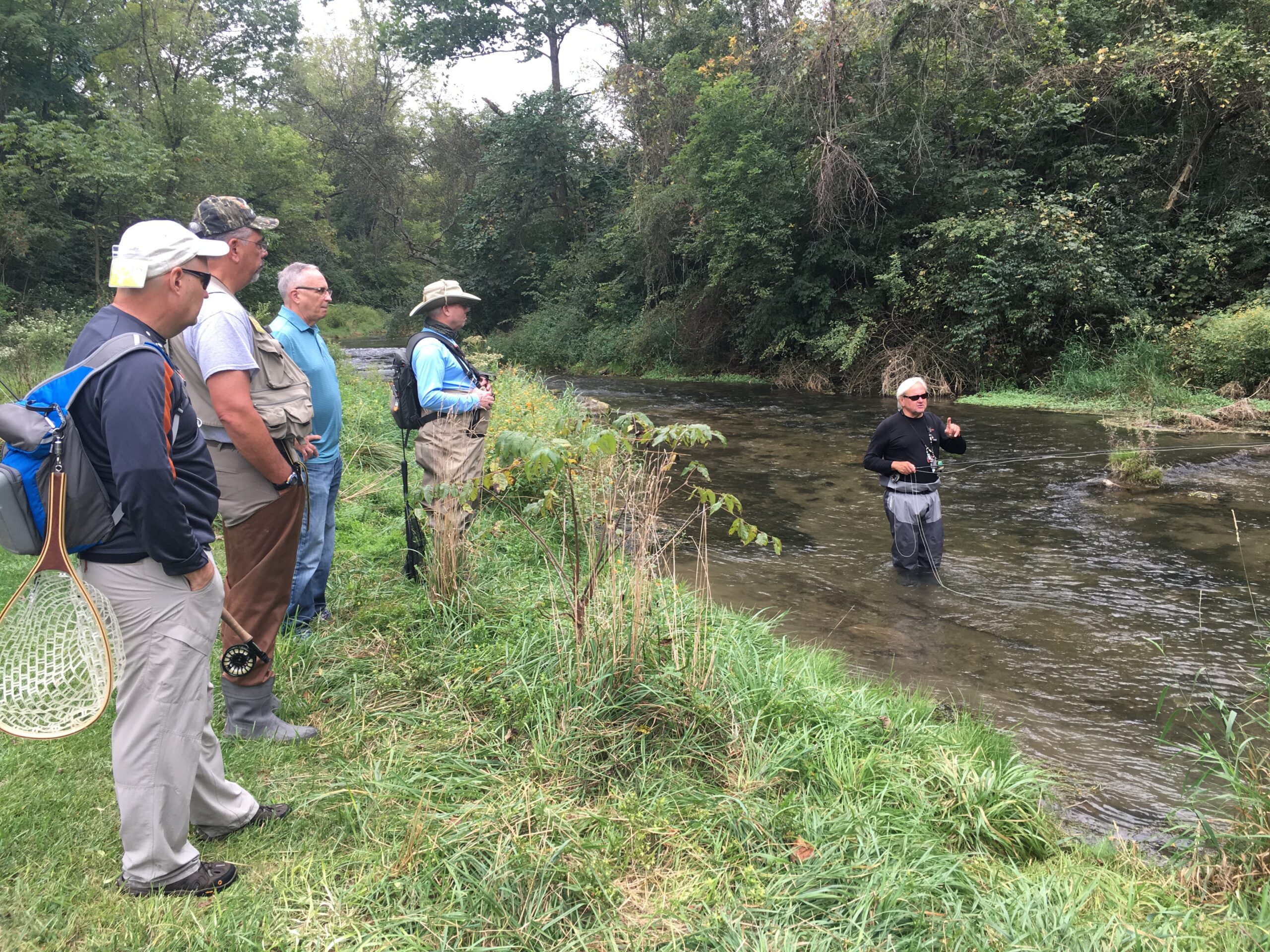
On my recent trip to the Cumberland Valley, I had the pleasure to spend two days with two amazing gentlemen I previously mentioned, fly fishing guides and environmental naturalists and pioneers. Neil Sunday and Eric Naguski understand the limestone waters in every detail and have been working their butts-off creating wild trout habitat, and creating spawning gravel beds like Charlie Fox and Marinaro did. Their clearing dense brush makes it possible to even fish the streams that have become so neglected and in a state of limbo that nobody would care to even cast a fly line on them-or could. They, along with Tommy Baltz, Eric Richards and Brian Judge and many others I’m sure I haven’t mentioned, are the new breed of limestone regulars that have been fighting a battle to protect wild trout breeders and their often migratory ways. The Cumberland Valley and Doc Fritchey is often their foundational office, and the TU groups there have done some remarkably good work. But as we know, there are two types of TU people. There are ones that are social and go to banquets, picnics and a lecture or two. And then the ones that actually walk-the-walk and do things.
Getting things done today and questioning established text book paradigms is often labeled as “disruptive”-I have been known to carry that label since I speak what is on my mind and what is good for the trout and salmon. As you get older you don’t fear the popular opinion recourse and consequences. Often because of our politically correct social climate, even the mere discussion of anything uncomfortable or disruptive is viewed as aggressive behavior unfortunately. Yet disruptive individuals have molded and shaped our country and civilization for centuries. Without them we would have nothing. The gentlemen I mentioned do that, but with a much better filter than I have. My fear is apathy will set-in because of the lack of a disruptive culture we are conditioned to fit-in and behave in the new “tolerable reality” limbo we live in. (author’s note: The Hallowed Waters Podcasts that I host featured both Baltz and Richard-both a must listen!)
So given the limbo state of the limestoners we are in is precisely that “tolerable reality”. If so, how do we start a new era of rehabilitation ? First, there must be a serious commitment from the PA Fish Commission to embrace wild trout in the heritage legacy waters of the Cumberland Valley limestoners. The wild trout here must be given a 100% protection, which includes a 24/7 monitoring. First step is law enforcement. When I asked Eric Naguski,” where have all the big trout gone?”… his reply was simple, ” they are poached out by the locals- no game wardens to be found”. The “hook-em-and-cook-em” worm dunking power baiters come in, and due to the fact that a large wild trout stands out like a pink elephant in crystal clear shallow limestone spring creeks, they are gigged-or fished out of these flies-only, catch-and release waters pretty damn quickly. I believe it. Gene Macri, the biologist that instituted the hatchery closing and being another passionate limestoner on his blog with his voice has been screaming about the poaching on Big Spring for two decades now since the closing of the hatchery and the new and improved “wild” Big Spring is in place. Frankly, in the 50 years I have been fishing the Cumberland Valley I have never been asked to see my fishing license- or even seen a game warden. In a day and age were conflict and the word “no” is considered invasive, have we become so incredibly correct that asking to see someone’s validity is interpreted as an invasive aggressive approach?- I think it is. In retrospect, the savages become more savage and are allowed to do what they feel like.
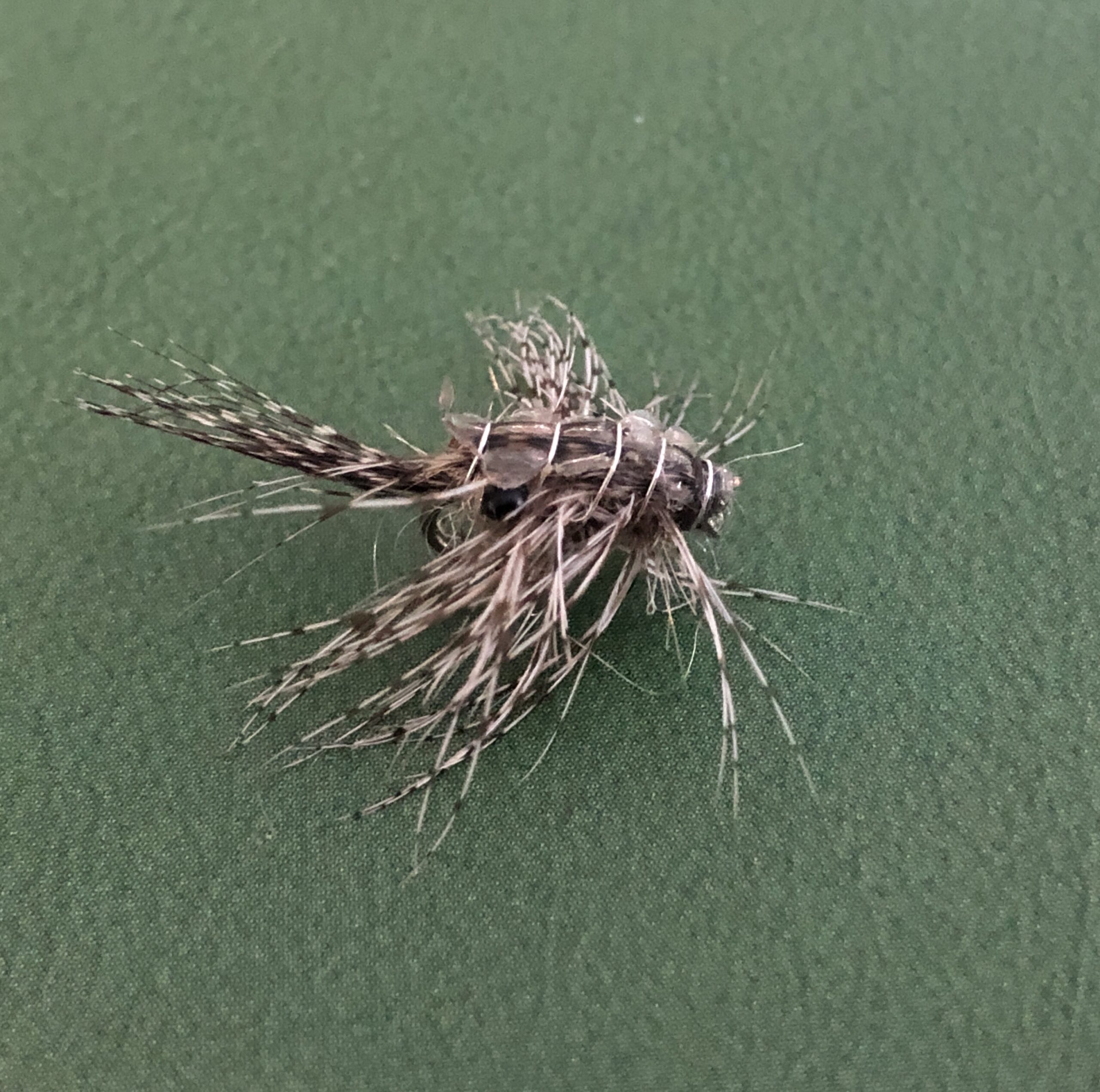
Unfortunately, as our country is divided and going to hell with hatred so are our anglers. The Wal-Mart power bait slinging, hatchery truck chaser can’t stand the thousand dollar fly rod/ C&R elite purists driving their BMW/ Range Rovers… and vice versa. The class system war has now come to the trout stream sadly. And the people that treat trout like rubber and kill indiscriminately will do everything to piss on the parade of the tree-hugging, bird watching, fly rod purists. I’ve seen and witnessed it with my own eyes guiding for decades and it is getting more divided and hate filled than ever.
But even more sad is ignorance and a system of laws that allows for it to flourish. Looking back to re-creating Marinaro’s and Fox’s wild trout Utopia of the 40’s-50’s, they had closed seasons, that came as early as June and July 15. For wild trout to possibly exist and flourish in a rapidly changing climactic and overpopulated world, and one where development is rampant, the trout need more strict protection today than ever before. In the old halcyon limestone regular days that Marinaro and Fox wrote about, there were a hand-full of good fly anglers with the right flies. Today there are tens of thousands of them, all with the latest exact duplicate flies and ultimate technological gear. With more fishing guides than ever showing them the “skinny” and quick dues paying on You Tube shortcuts, one only needs to swipe and Google to pay ones dues.
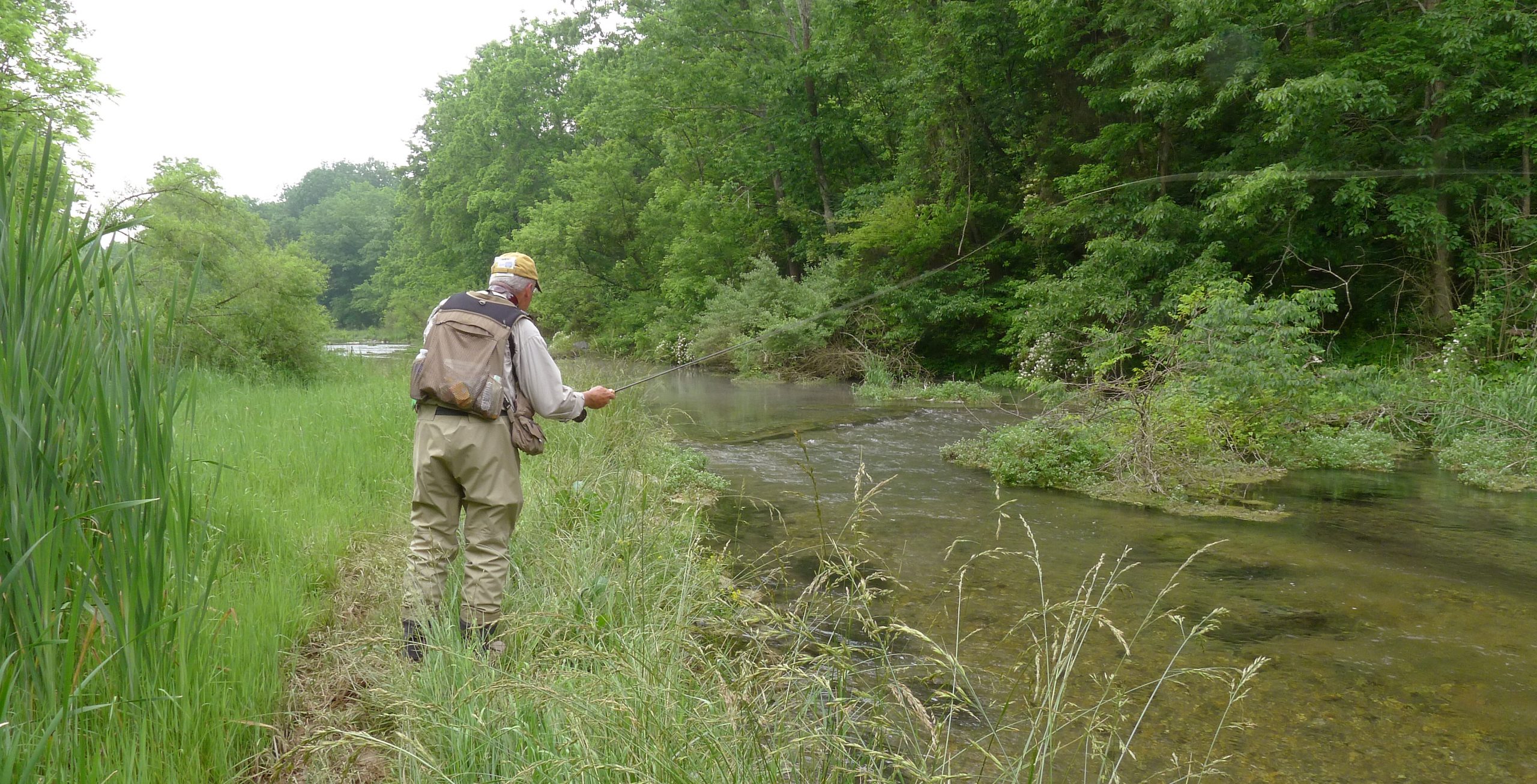
Guides are a good thing if they are servants and stewards of the water, and not just takers. Technology, GPS spot sharing and more free time created from the Covid work-at-home new model allows for more river traffic. Robots have replaced manual labor. Thus a trout stream is now 24-7 traffic. This comes with the addition of night fishing and Mousing becoming the new norms. Therefore those little times of a opportunity that a wary big brown could venture out in security to feed comfortably at night are now a constant invasive mouse bombardment or drift boat bumper car ride by day. The “Heritage Waters” of the old limestone regulations used to say no night fishing- one hour before dawn and dusk allowed. No wonder the sight of a fat healthy brown has been replaced by skinny, slinked-out snake browns afraid to eat. Activities like trout spawning have now become a nighttime affair since a big brown, brookie or rainbow; or salmon viewed on open, shallow spawning gravel by day, was surely supper and gigged-out by a harvester; or punished and harassed by an ignorant deep nympher or streamer stripping trophy seeker trampling on redds because of year-round angling seasons allow them to be there.
In my opinion, our laws that govern wild trout fisheries are pretty-much a perfect epic fail setup. Allowing anglers to fish for trout during periods of vulnerability and stress is one big problem if you want to mange for more wild trout. Montana’s “hoot-owl” restrictions tries to put a band aid on these problems, but it is not enough. Giving the jailhouse keys to the inmates is the only way I can describe or current state of wild trout management- all because of money and license sales. All regulations take into account for the needs of the anglers, the state or provincial’s fiscal gain, and very little to do with being in favor of the fish-period. Thus wild trout need protection in times of stress and vulnerability. We tended to have had a better grip on that 70-80 years ago than we do today. That frankly is mind boggling, given all the data and scientific studies we have available today. Spawning sanctuary closings of river sections were common when I was a young boy growing up- today they are next to non-existent. Trout refuge areas protect trout from heat stress and anglers fishing for them when they were corralled around cold water springs struggling for life. I know of one mandated by the Township near Roscoe, N. Y. on the Beaverkill near Horton Brook. These closures also protected their spawning sanctums. Maybe that is why there seemed to be lots more big trout around back then when Fox wrote his papers for the Harrisburg Fly Fishers. No brainer to me! That and the fact that their wasn’t a strip mall, Dollar General, Home Depot, Sleep-Inn and new housing development in every former spring meadow sucking ground water out of ground aquifer trout streams.

Opening trout streams to more year-round fishing is the ultimate end- of- the- road doom wild trout fisheries will experience-regardless of whether they are catch-and-release only. Though anglers have become more respectful, more C&R oriented even when not mandated to do so by law, it is the 20% of rotten apple takers and abusers that spoils 80% of the good bushel basket. But even allowing an ignorant to what is taking place angler to walk trout streams when there is spawning going on damages way too much. It disrupts the natural harmony and peace needed by wild trout to spawn. Ones like on spring creeks that are exposed to the vulnerable condition of being in shallow visible waters with their often total concentration on feeding, spawning, and not being as watchful of predators’ as they should- man being the worst. Its so easy to swing a spinner or strip a streamer, or Euro nymph and egg pattern to those vulnerable spawners, all for an Instagram hero-shot prize.
Keeping streams open allows for the temptation to be there, and even good superego folks like police, ministers and normally fine up-standing citizens’ can go to the dark side- in guiding I’ve seen it! I’ve done it as a youth, and frankly most of us have. When I did it as a son of post-WW II immigrant parents that survived off the wild and subsistence farming or went starving, that was the culture I was raised in. Was it a bad culture?-no not at all. Were streams and rivers different 50-100 years ago and more sustainable- yes. Also as a kid I didn’t know better. My mom wanted fish for the table and I was determined to bring them to her. A poor family living in the backwoods doesn’t read the lofty fly magazines or National Geographic. If the stream is there, open or not, and the trout are on shallow gravel-dammit!, ..they are going on the table. Year-round seasons on wild trout water just makes these practices possible and legal.
Put-and-take/ stocked waters are totally in another category and could afford the year-round access and pressure. But even on marginal wild trout waters, where more wilds could exist if given more protection, you would be amazed what even small closed seasons, sanctuary waters can do to create more wild trout populations- they work miracles. N.Y. ‘s Neversink River is one example where the wild brown trout population just keeps improving with closed seasons. And now that it is open year round, I fear its wild trout momentum will be lost forever or dealt a severe blow.

Besides the dark and tragic side of year-round angling through spawning seasons by different species, walking carelessly, or by accident on spawning gravel and crushing eggs is another dark reality. It is so easy to do especially on shallow limestone spring creeks that are less than knee deep-and becoming shin and ankle deep with climate change droughts we experience yearly now. I would be safe to say that 8 out of 10 anglers have no idea of what a gravel redd looks like. When an angler steps into a tiny stream their focus is on the catching, the cast and trees that are in the way, and how to present their offering and watching for a trout to grab it. We often dont look down until the wading gets deeper and more difficult. How many times we came so close or already stepped on or near gravel redd areas-oops! All the while thinking what a tremendous task it is for trout to build and choose a redd despite being bombarded by anglers, lay its eggs and hope that silt and a winter floods, which are becoming more common as cold and warm weather fronts collide in what was a normally a very cold winter, doesn’t blow the eggs out and silt them over and suffocate them. All knowing in hindsight that perhaps maybe a dozen wild trout might grow up from tens of thousands of eggs laid is even more of a tragic tale. Also as our wild brood stock becomes smaller in size and numbers, so are their redds become smaller and less noticeable, thus making them less obvious as are large salmon and steelhead redds.
Why are seasons now open year-round and with the trend for them becoming more common? It is because of the root of all evils with regards to things wild-money! License sales, which I mentioned earlier, and accountants measuring success by these license sales, not wild trout success, is the crux of the problem. Also states would love to have more stocked trout waters and an economy based on supply and demand of fish and license sales dependency. Very much like a socialist system the world seems headed for. Wild fish have become a nuisance to progress and development in retrospect. They are needy little bastards that involve protection- nobody has time or wants to fuss with that.. Saying that new evil word “No”, in today’s liberal culture of instant gratification is deemed derogatory to progress. Also constant monitoring of wild sustainable populations for critical limits takes time and man-hours of biological staffing, which have been stripped down to almost nothing in some states and provinces. Wildlife law enforcement in some rural areas are spending more time chasing meth-labs and domestic violence, theft and other stupid human trick issues, and thus time spent other than protecting wild trout and salmon that they were intended to by their education. Wild trout need more stricter zoning and planning with strip malls and housing. But unfortunately for the wild trout and salmon, that restricts development that fosters a growing tax base, where money is the sole measurement of a municipality’s progress, not success of things wild. Its a vicious cycle where one only needs watch the Paramount series “Yellowstone”.
The Cure for a Utopian Limbo
In hindsight and sadly speaking, it may be for allowing more private land holdings and conservancy areas to be more common. I’m sure that makes the hair standup on many liberal utilitarian’s back’s. But private and/or controlled access is a good thing for wild trout and the wilds in nature. Look at the chaos and shit show that Yellowstone and other national parks have experienced in the last few Covid years when tourism went berserk and so did the wild buffalo, bears, wolves, moose, mountain cats, raccoons, elk etc. acting bizarre and some even attacking more people than ever before because of all their common habitats and people’s intrusions colliding.. Maybe more billionaire landholdings and estates like CNN’s iconic Ted Turner’s massive Montana wilderness will allow for more protection; as did the Wild Atlantic Salmon Reserve (ASR) founded by the wealthy British entrepreneur Peter Power in Russia’s Kola. My opinion is because governmental protection is too weak and vulnerable and on the take for money as opposed to protecting wilds. And often they ridiculously protect flourishing species that damage our fisheries and which dont need protection anymore like cormorants and in many areas herons. In the old days of estates on trout and salmon rivers the land barons hired ghillies and riverkeepers to manicure their rivers, eliminate pike, otters, herons and other predators to protect the trout and salmon populations and watch for poaching. Man protects what he highly values and possesses-period.
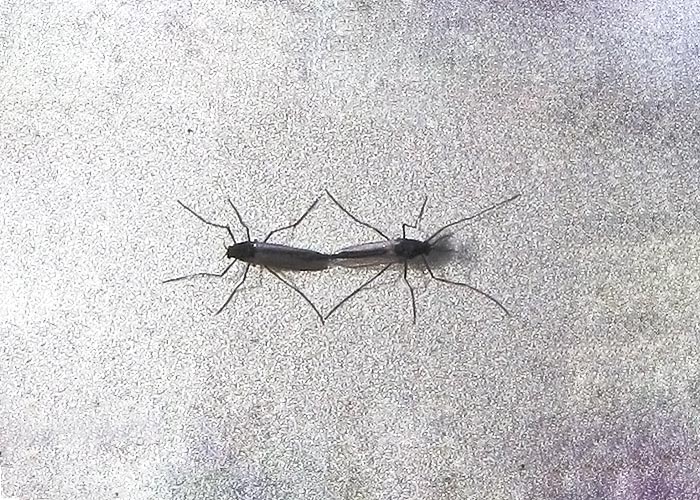
But more importantly what must be done immediately to preserve what wild trout and salmon we have left is managing each fishery as a micro-ecosystems, each being unique and separate fragile and vulnerable entities. Our “one size fits all” current state of trout and salmon management does not work. In our growing liberal thinking, we assume that society is ignorant and illiterate and cannot comprehend regulations; or not have the ability to read the fine details of regulations-that’s rubbish! If that is the case they should not be allowed to go fishing. If they have the ability to sign-in online, make a password and buy an E-license, which everyone is doing, they can read regulations. The Germans and Europeans are light years ahead of us in their regulations. In some cases an angler has to go to classes and an angler certification process for any months before they can fish like in Germany. A country that has lost 80% of their wild brown trout indigenous waters to overpopulation, pollution and over development, all done through chaos without regulation during the World Wars and a post-war rebuild. The liberal nature of trout stream management is growing and only one end lies in sight-decimation. A system which entails more hatcheries, more stocking trucks and the death-knell for wild trout and salmon. A sad ending that would wipe out millennia of evolutionary genetics and nature’s way. A frightening reality if we don’t correct the path we are on now. Again sorry for the preach!
Without a doubt and a no-brainer and quick natural fix to enhance and protect wild trout streams is closed seasons as mentioned earlier- this costs nothing to implement. Or at bare minimum least have sanctuary waters for spawning protection and nurseries. These are century old management tools to give wild trout and salmon the spawning protection they need and the stress reduction to overcome environmental and climactic conditions. I am proud to say that my current residence state has them in place on wild trout waters. Here in the type classification numerical systems of Michigan’s waters the streams with the highest yield of wild trout are given a 7 month closure that insures great trout fecundity. From October 1st to the last Saturday in April you cannot walk these waters with a fishing rod-no fishing period! The amount of wild fish in these systems is staggering as a result. One spring-fed river I fish and guide on has both wild brown and brook trout in hectare numbers rivaling the Big Horn- again due to seasonal closures.
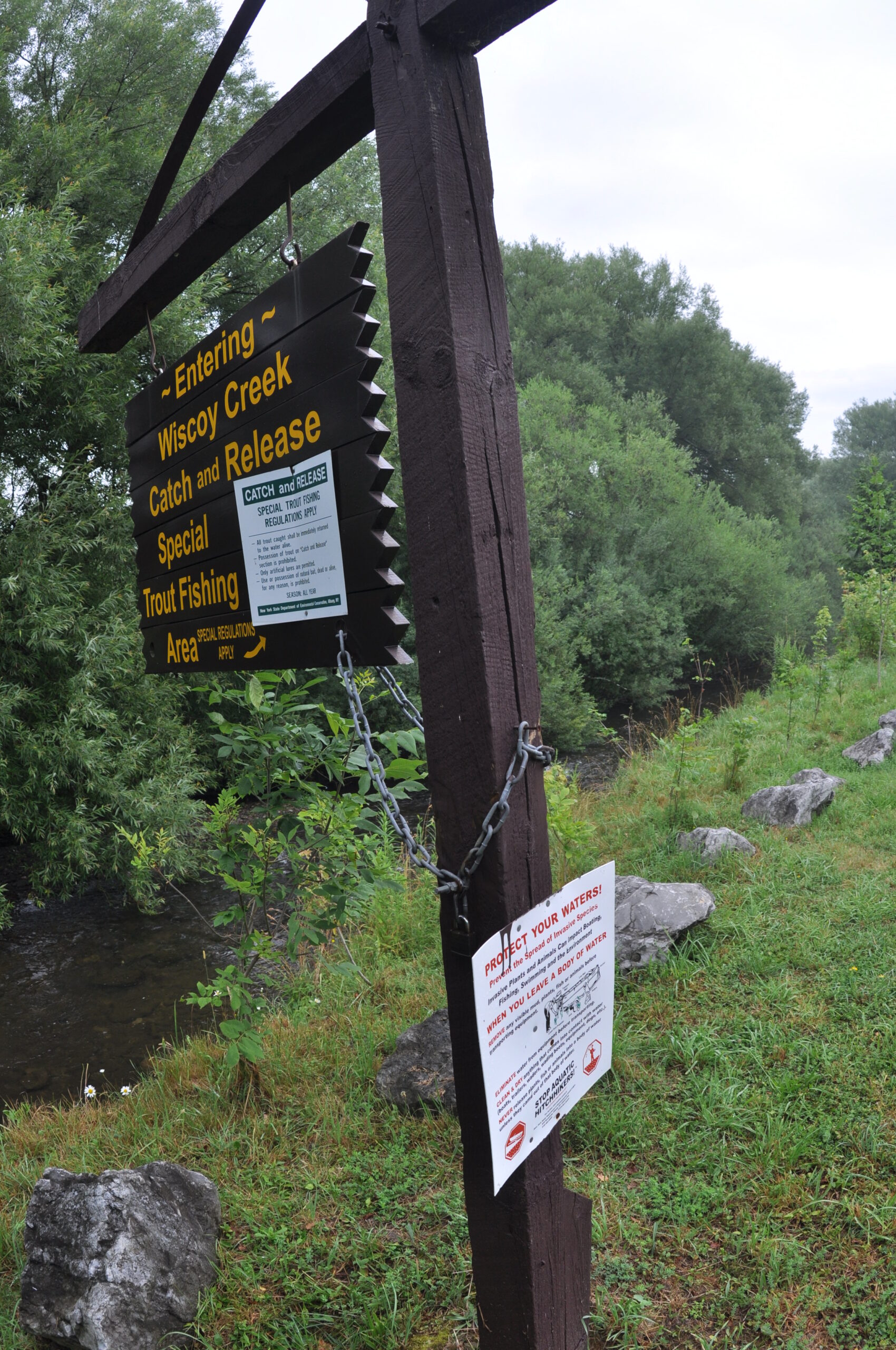
As briefly already mentioned, New York State’s recent opening of year-round trout fishing on their historic wild trout waters was a huge mistake-especially in the Catskills that are one hour away from the largest population on earth. Here the wild brown trout are not only fighting the massive urban populations of New York City, they also fight the constant battle for water with extremely fluctuating flows that can dry up sections of river during spawning seasons if the reservoir faucets are turned off- or flushed open, drying-up or silting, and scouring redds in full bore. Though there are watchers of the resource like FUDR and TU etc., what is needed is a daily, real-time monitoring, a lover and guardian dedicated to managing the resource like they owned it, guides are in that bunch. But are powerless and guardians that are often perceived by governments has having their own wallets as their motive- which actually is not a bad thing!
A Modern Riverkeeper Solution
In hindsight thinking back to the days of Marinaro, Fox and the Harrisburg Fly Fishers, these men were riverkeepers. They weren’t ghillies in the true sense of the Sawyer stereotype, but they were high guardians of the fragile little spring creeks. A handful of these gentlemen exist today that I mention in this article. We have to start thinking outside of the established parameters and working out of structured and paradigms to foster change for the betterment of wild trout and salmon. I keep going back to the one thing the gentle flowing little chalk streams of England had for centuries, since the first flies were cast on them- river keepers/ghillies, which we already introduced. Hired as ecological engineers, some were just a warm body scarecrow in some instances detouring poaching combatant locals as every glass castle had its rock throwers. Also they were fly fishing guides supplementing their income from the landowner/barons and their privy clientele and snobbish clubs. But these ghillies were also the ecological watchtowers of these delicate spring creeks and salmon rivers that needed 24/7 attention.
Frank Sawyer was one of them and by far the most iconic ghillie, being on the British Officers Club Waters of the River Avon. He practically lived on the water 7 days a week in his Ghillie’s Hut. In addition to guiding officers and their wealthy guests, their duties were trimming the spring creek grasses of watercress, elodea, chara and duckwort, ridding the waters of predators like herons, otters and pike, setting eel traps and harvesting an Atlantic salmon or two for the lordships’ tables an guests. Thus Sawyer practically watched every micro-environmental detail of his beloved brown trout and their health and prosperity. Today his historic Ghillie’s Hut is adjacent to the rock star Sting’s property in Wiltshire. When Sting wanted to tear it down due to it being an eye-sore for Sting’s panoramic vista view of the Avon valley, the township and locals practically ran Sting out of town. Sting had no idea he was messing with the legacy Sawyer was. But he earned quickly.
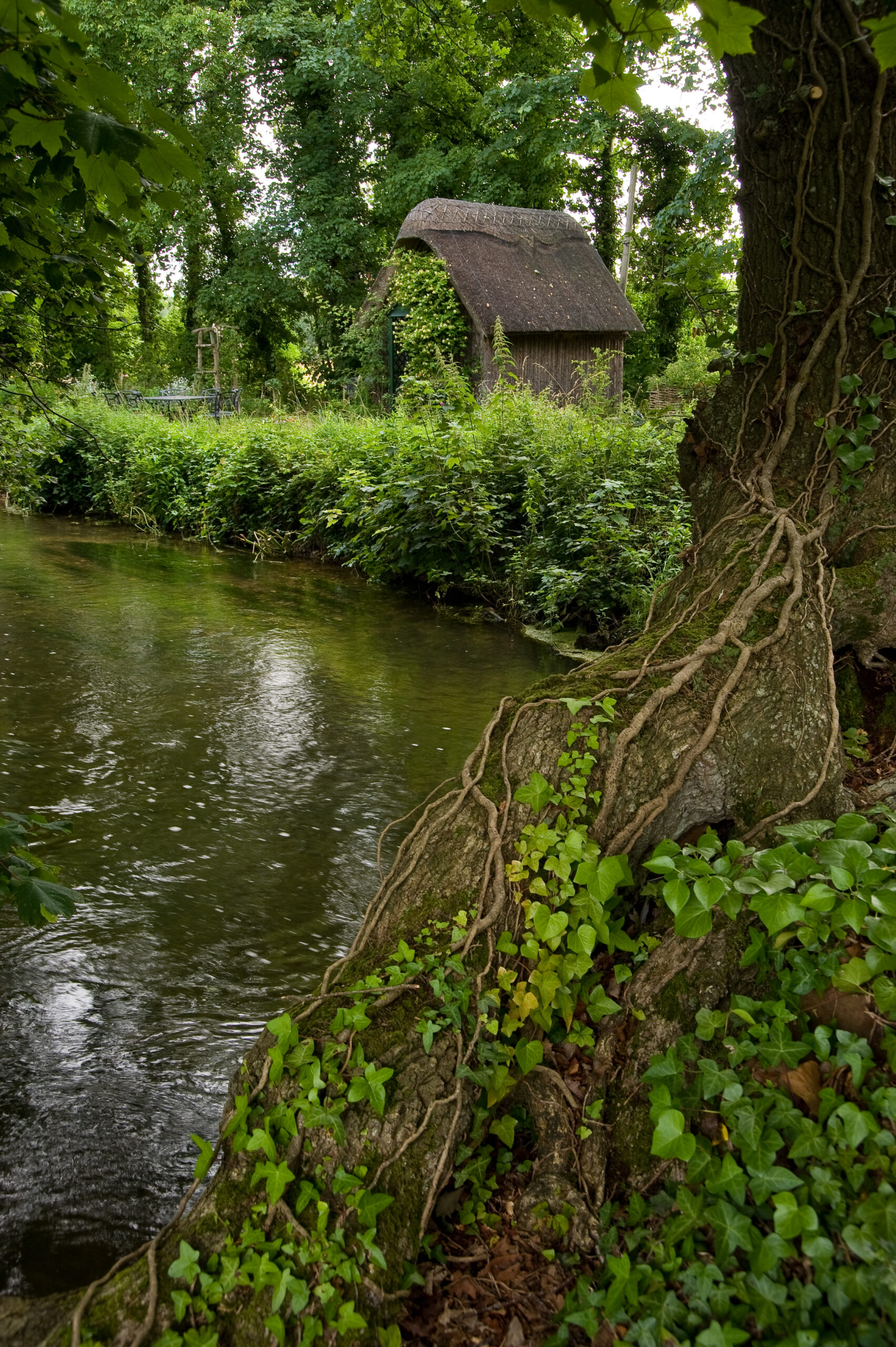
Thus in retrospect Sawyer was the model and synthesis of this new age angler/conservationist that most guides today actually resemble, whether they know it or not. The fact is that for more fragile wild fisheries like little spring creeks to survive today, we need more of these guardians. Today guides are just not as defined as such protectors, since our fishing passions often collide in values between protector and provocateur. Can one be an extreme protector and yet thoughtful harvester and so called “nature harasser” as some PETA people view fishing? In our PC world this is always the Yin and Yang that tugs at anglers, which never was the case in the past. Sawyer’s idle time was filled with his book writings, inventing fly patterns like the Pheasant Tail nymph, Grey Goose, Killer Bug and many others. His bamboo rod tapers that he hooked-up with Pezon et Michel and their financier supporter; Charles Ritz of hotelier fame, formed a true marriage of talent, finances, and respect which all form a wonderful world of the trout legacy. Sawyer spent his days in his ghillie’s hut contemplating his work details, drawing diagrams of his admiration of nature and tied his custom flies for the next fly fishing gentleman that would gift their appearance. He was a simple man like most guides and ghillies who had a love for trout and nature, and avoided the limelight, which should be much given to him. His book masterpieces’ of the likes of ” Nymphs and the Trout” and “Keeper of the Stream” tell his tale:
“No wonder it is said that there were more trout and insect life in the days of long ago. Of course there were. Fifty years ago the waters of our valley covered a surface of almost a treble of what they are today. Our river courses then were just recipients of hundreds of tiny waterways, and of the multitude of creatures which each and all the waterways produced.” ( Keeper of the Stream-Frank Sawyer)
Sawyer’s words couldn’t be more appropriate for the tiny limestone spring creeks of all of North America- more so especially for the Cumberland Valley where development is now rampant. Perhaps the only last place in North America to still be suspended in a long ago time and lacking development are the hundreds of little limestone spring creek coulees of Wisconsin’s/Minnesota and Iowa’s Driftless areas. Here these valley coulees still remain intact as they were thousands of years ago, and the wild trout there very happy.
Thus could a solution to the inevitable decline and fall of these magnificent gems lie in an era long gone? Could having true river keepers in the time honored sense be the solution for the Cumberland Valley Limestoners? They can be fly fishing guides that are given that title and sworn to protect and uphold the trout and their ecosystems. Perhaps funded by private endowments and corporation trusts, Trout Unlimited, the American Riverkeepers Association and the state fish and game agencies and creative financing, the riverkeeper would vow to protect and enhance their chosen stream. They would gain some salary along with guiding and work with scientists and environmental engineers to manicure and enhance each little limestoner. Since Sawyer received pay from the Officers Club and his clients, these modern riverkeepers could be creatively funded. The trout would have a 24/7 friend and liaison to give immediate attention.
Another solution is restricting access and pressure and regulating it. This would be to allow minimum rods per day on waters through registry and beats which the state and riverkeeper administer. Assuring that all visitors report catch details, log observations, hatch information etc. in order to compile a data base. Donations would be highly encouraged. Stream closures and sanctuary waters would be developed that could be mandated for spawning and other critical conditions like heat induced droughts and any other natural or manmade issues. This seems lofty but not impossible.
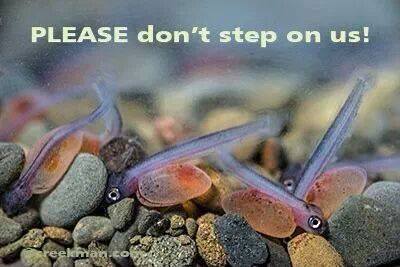
Another option is increasing existing trout populations, which is badly needed in my opinion. This could be done with wild egg take and Whitlock-Vibert boxes to keep whatever wild strain is still there and has adapted a life survival strategy in that stream to flourish and have as pure genetics as possible. This is an alternative solution to stocking that will bring back faltering populations on these limestoners’, which they have all issues with. The wild trout loads on the big three limestoners : Big Spring, Falling Spring Run and the Letort are in serious critical decline. They rebound in some cases mainly since they have little fishing pressure. Increasing their carrying capacity increases competition for food which thus creates more fish willing to take the fly and make them a more viable fishery for more anglers to consistently enjoy and protect.
In addition these riverkeeper/guides should be given some deputy status to report and enforce fishing regulations, given the dismal status of game wardens each state is experiencing. It seems to be particularly serious problem in Pennsylvania due to its vast size. The deputy status is a presence alone that can be a huge deterrent to poaching
Eric Naguski, a perfect riverkeeper model mentioned earlier for this new role I am proposing, being an aquatic ecologist, ghillie and entomologist, had a very enlightening retrospective comment when we were discussing the old days and what an amazing fishery it was in the upper 100 yards. His words really struck me hard as we talked and chatted about this “tolerable reality” being a tough pill to swallow and how it doesn’t always fit it with lofty utopian values. ” Maybe keeping the hatchery as it was, but adding a good purification/ filtration system for its effluent would at least enhance the low flow rates the springs are now experiencing as former trickle of themselves, as development is sucking ground water. Also adding a little bio-nutrient load isn’t a bad thing as long as it is monitored 24/7. The new Big Spring’s upper Ditch section is now almost too clear, subterranean sterile and practically void of fish- to see one or two there is a miracle as opposed to the thousands of them when the hatchery was running. This tolerance with modifications and controls, along with doing stream rehabilitation on the middle and lower sections to enhance cover is probably the best the Big Spring would and could ever be!- maybe…” That was a “bingo” comment I was surprised yet delighted to hear. Here was a practical, realistic alternative to just a complete reversal of what the Big Spring was for a century. A stream wrought with pasture grazing, cow manure, small private hatcheries that dumped effluent, grist mills and a host of what is deemed “undesirables” in a the new utopian way of thinking. Yet!, the stream still had tons of wild trout in it!
As with many multiple and complex issues facing our wild trout and salmon rivers today, there is usually not just one “smoking gun” problem; or oppositely one utopian solution we all seem to have the answer for. But in the end, like the tolerable reality that has now become Big Spring, was the answer just a fleeting dream?, or a dream that needed to be nurtured, matured, evaluated and cared for. We have failed on all fronts.
A Return to Simplicity-Trout Lives Matter
I fear my romantic ramblings are often as hopeless as Don Quixote chasing windmills. A return to a simpler era of Marinaro’s days long gone would be such a welcome relief today yet perhaps unattainable only in prose. Maybe its time we must protect every sacred last trout and salmon that swims, regardless of species, size and which ones are deemed indigenous, desirable and pure. If the limestone legends of Marinaro, Fox, Shires and Black are looking down from above today, the rain that pours over the Big Spring are surely their tears. Those same tears fall over the Falling Spring Run and the hallowed Letort that have also been victims of man’s abuse, often greed-filled stupidity; or pride and ignorance. In Marinaro’s final days I recall him being extremely upset by the TU stream improvement work done on Falling Spring Run. 50 year later it still hasn’t improved today and is a dismal mess of poor habitat, posted no-access and extreme lack of trout.
I guess its human nature to try and re-kindle the feel-good emotions, the joy and simplicity of years gone by. Nothing brings that out so deeply than something we devote so much of our passion and energy to than fly fishing for trout. It is really not a sport. But more so a high priest religion, where the vast differences of opinions, theories, likes and dislikes all collide into one huge melting pot of subjective human thought, often making a Kilimanjaro out of a mole hill. Water and a pristine running trout streams embody all things pure and wholesome. The purity and innocence we lack in our world today and personal lives is what I believe stirs and ignites the rank and file to make things better and restore things to “the way they were and meant to be”. The many utopian agendas like fixing a trout stream- whatever that really means; choosing what fish are meant to be there or not, fishing a different style that is deemed higher-up on the angler elite evolutionary scale etc. etc., are all part of the pure loftiness to make things better. Or perhaps make oneself better or feel good. Yet once the job is done and Utopia has been declared they often last temporarily, and more unfortunately those visions and labors are rarely followed up on to see their lasting effects. These utopian visions are often left to smolder into a tolerable reality that Stafford’s quote at the begging and so beautifully eludes to. Thus such is the case with the Big Spring.
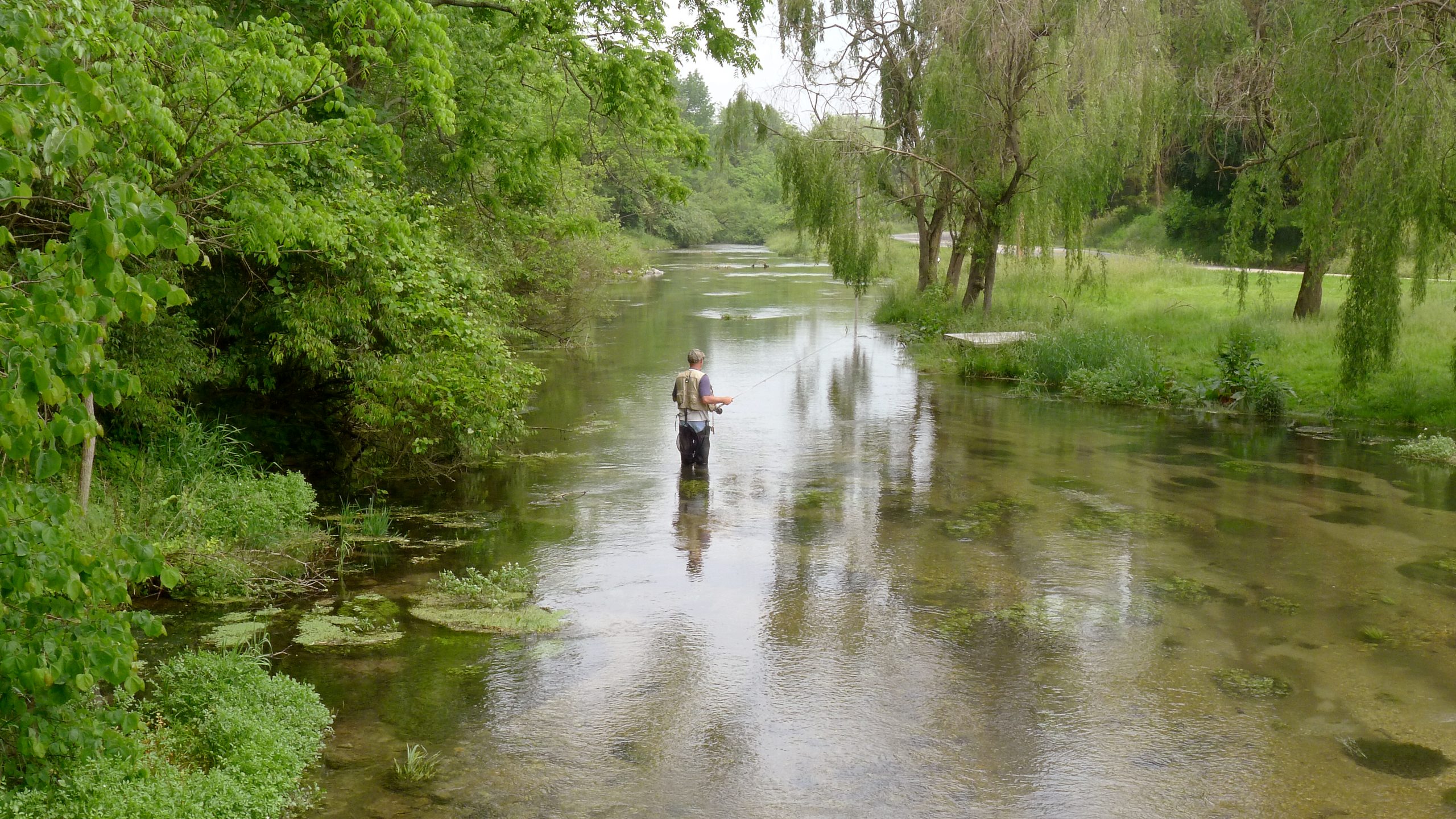
In the end I believe these quotes by Marinaro in his Modern Dry Fly Code, have done more damage than good, and thus we forever chase those ethereal moments:
“A mass of dimpling rise forms, occurring and reoccurring with increasing tempo as the evening advanced. Three or four hundred feeding trout was a fair estimate of those within my view. A like amount was estimated by each of my friends, making a rough total of one thousand or more brook trout rising at the same time but rising to something invisible to all of us” ( Modern Dry Fly Code-V. Marinaro)
Maybe the lack of transparency of what the trout were rising to that Marinaro et al witnessed that day is the perfect Utopian symbolism of what fly fishing forever does to its hopelessly captured and crazed trout bum victims. A passion and obsession that locks and seduces them until death do they part. A forever elusive and unattainable utopian dope that makes us wish for better and more. But in the end, every trout is sacred, even a single one and not always the thousands of the most purist and forever ethereal trout of them all- the brook trout, that Marinaro viewed on the Big Spring that day. If you look at the B&W images of the stream at McCullough’s back then, the stream looked worse and more developed than it is today- almost like a man-made canal. Today’s lush watercress and seductive looking spring creek waters look much better than it did back then-only thing missing are the trout!
The day soon is coming where the trout will all be unicorns if we don’t wake-up and appreciate what we have, regardless of how it is packaged and sold. As the biblical passage in Genesis states: “man will have dominion over the fish of the sea”, maybe it should instead have read less on the supremacy and more about a humble appreciation and stewardship for what the natural laws dictate. Maybe the Neanderthal cave drawings, native people’s totem poles and other symbolisms that showed they worshiped fish and elements of nature as gods would be better suited for us and the fish.
Sometimes some things are best left alone, as painful as it may be. Or at best, appreciated for what they are, regardless if they fit our utopian agendas. All we can do is be humble servants of what is, regardless of the damage done, and nurture what nature and the marvelous trout and salmon have plans to become.
Matthew Supinski -Hallowed Waters-The Ebb and Flow
(Note: If you like what you read, we invite you to the new printed glossy editions of Hallowed Waters, each dedicated to focusing separately on the passion and journey for Trout and Steelhead/ Atlantic Salmon… Stay tuned and coming to our new website at www.hallowedwaters.com We wish you a great year, many blessing and tight lines to come in 2023 as we continue to worship the fish we love and the hallowed waters they swim in.
Also. if you haven’t found them yet, our Hallowed Waters Podcasts I am so honored to host features some amazing iconic guests that have contributed immensely to our legacy and deals with deep thought provoking fly fishing issues and tactics that consume our passion, ones which every fly fisher loves to deal with and ponder over… Available free on Apple and Spotify or wherever you get your podcasts…https://podcasts.apple.com/us/podcast/hallowed-waters/id1606667042 )
Many Blessings,
MS